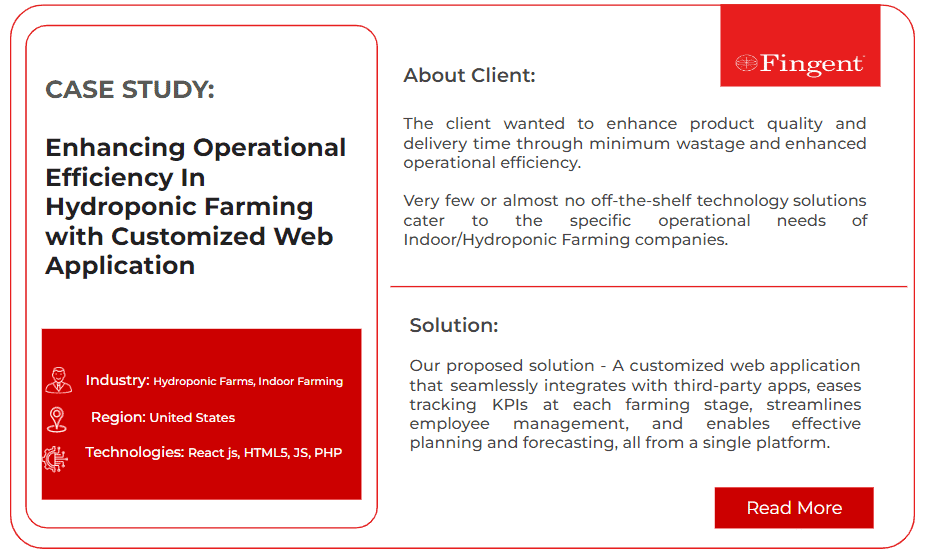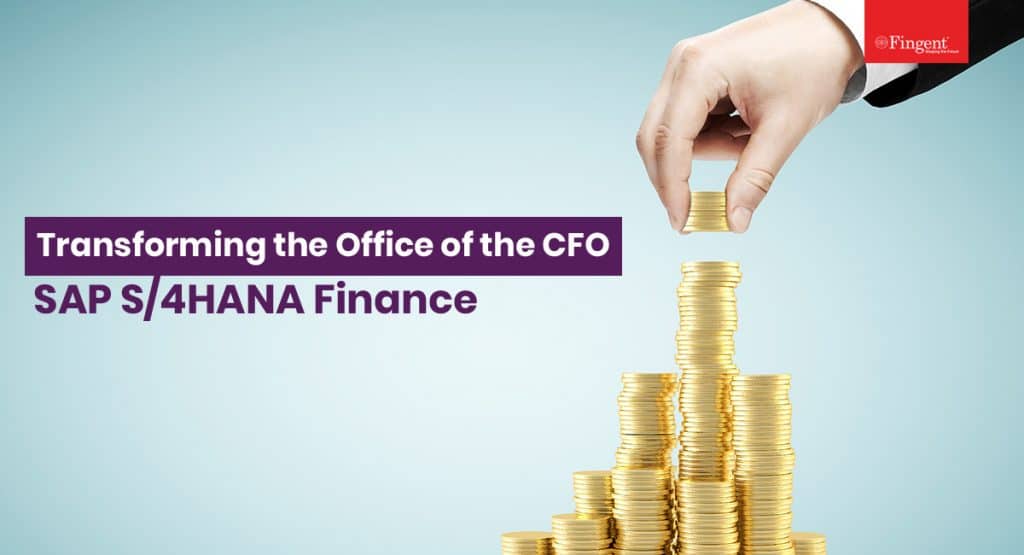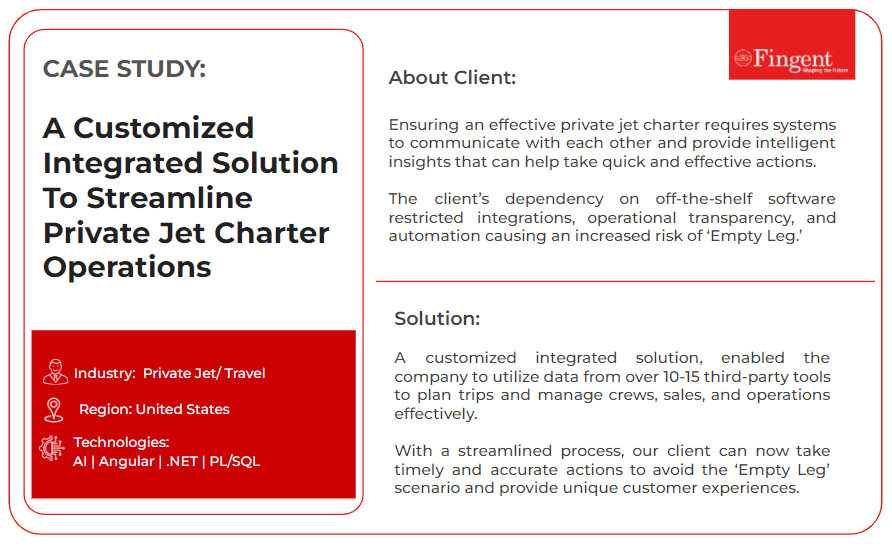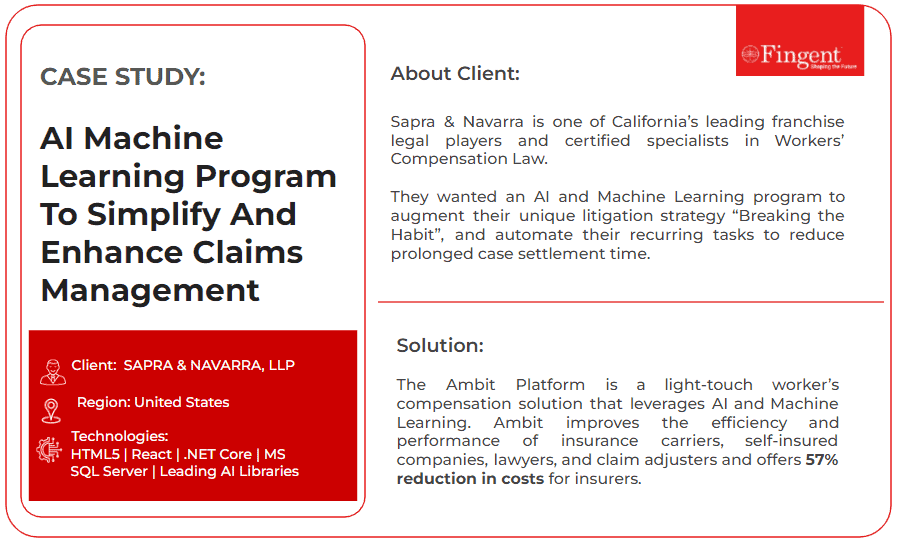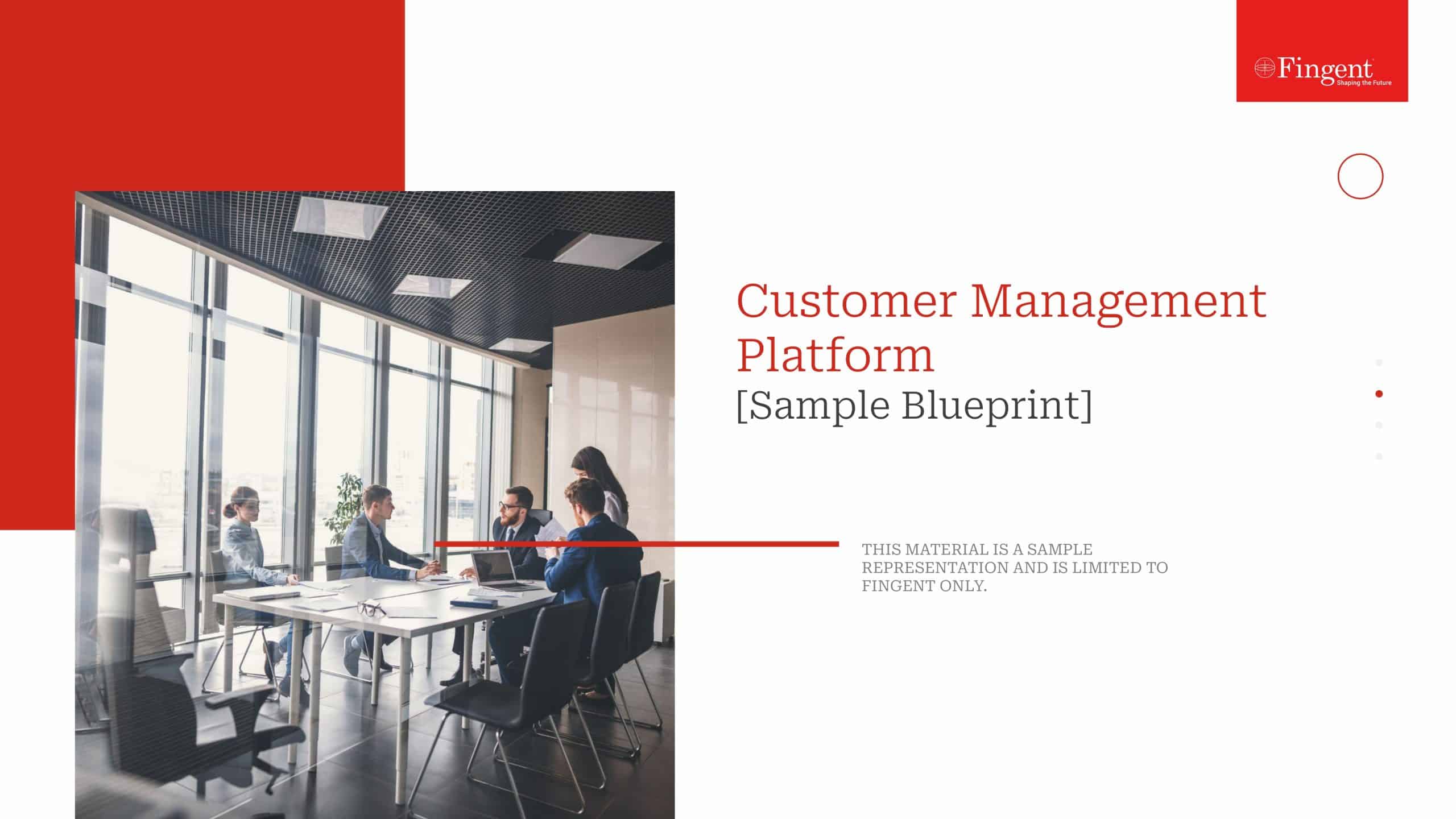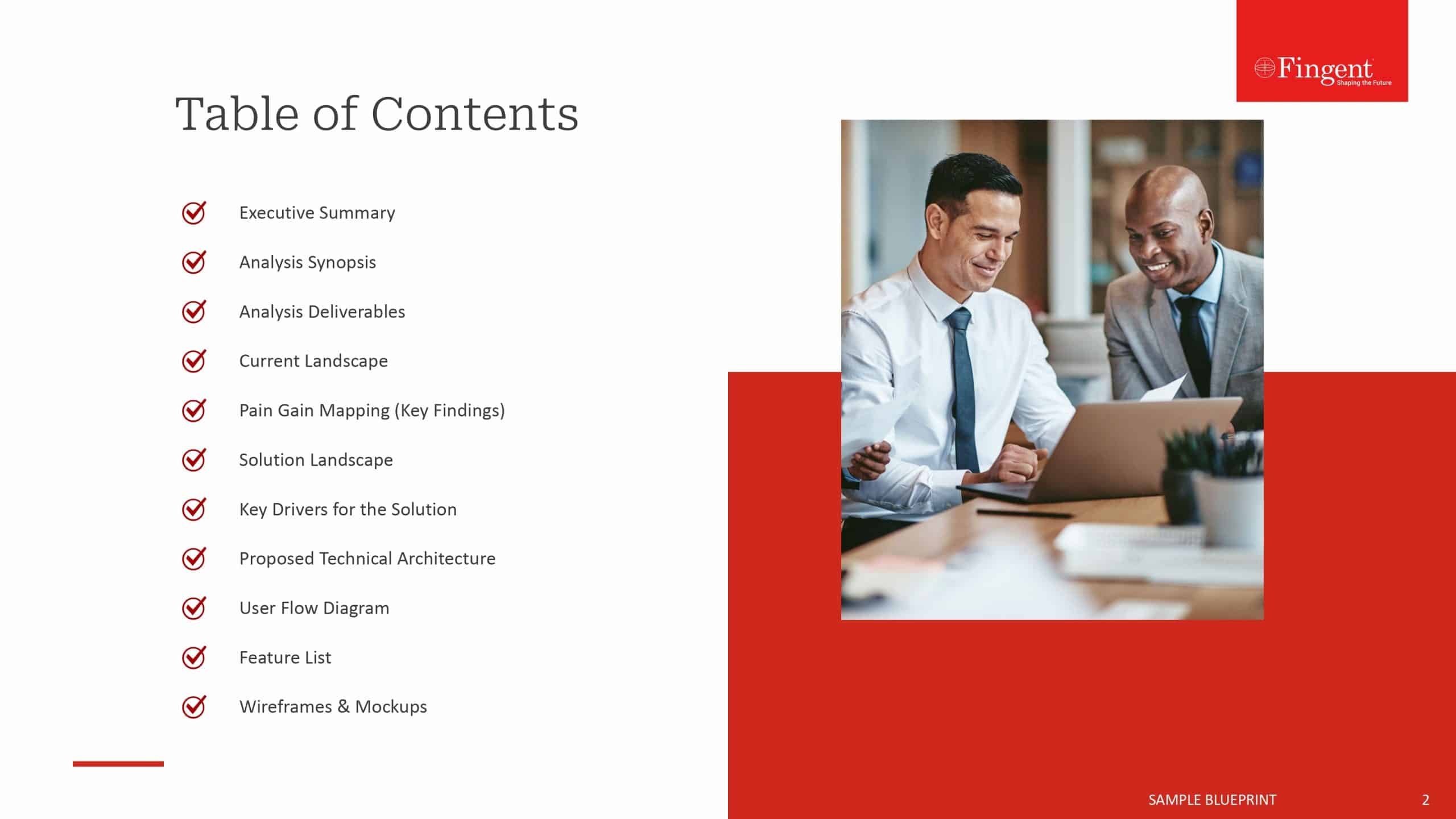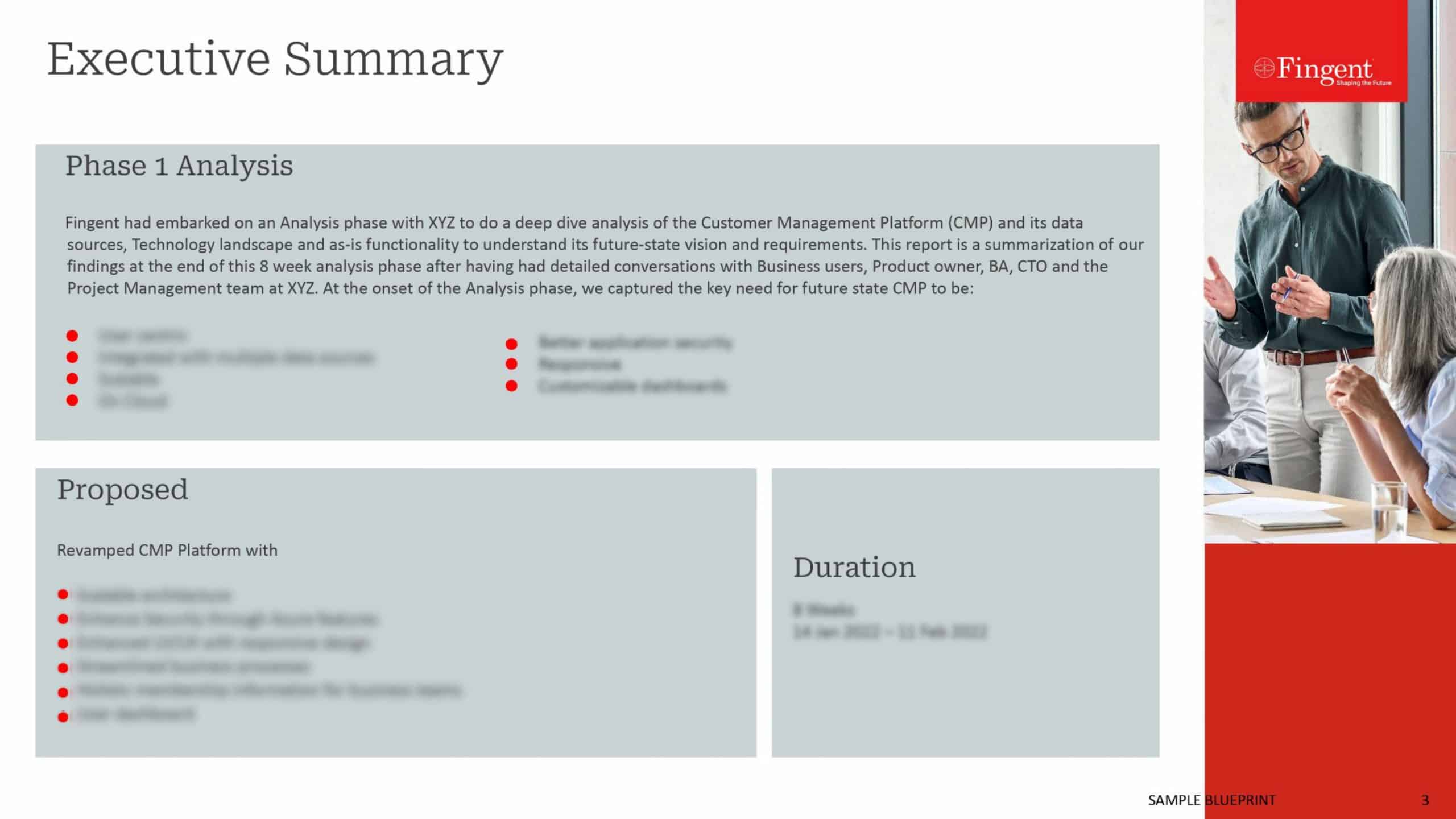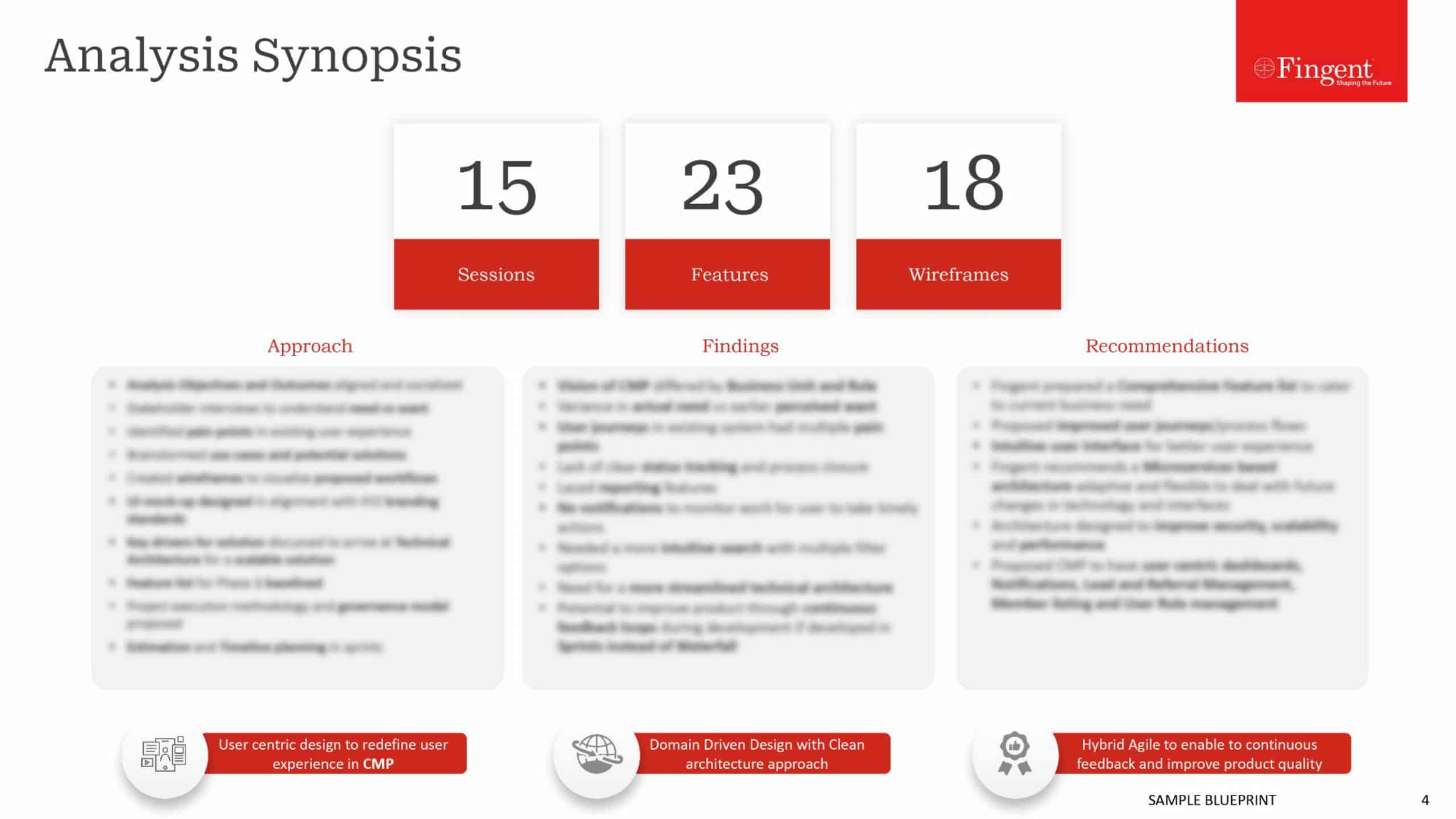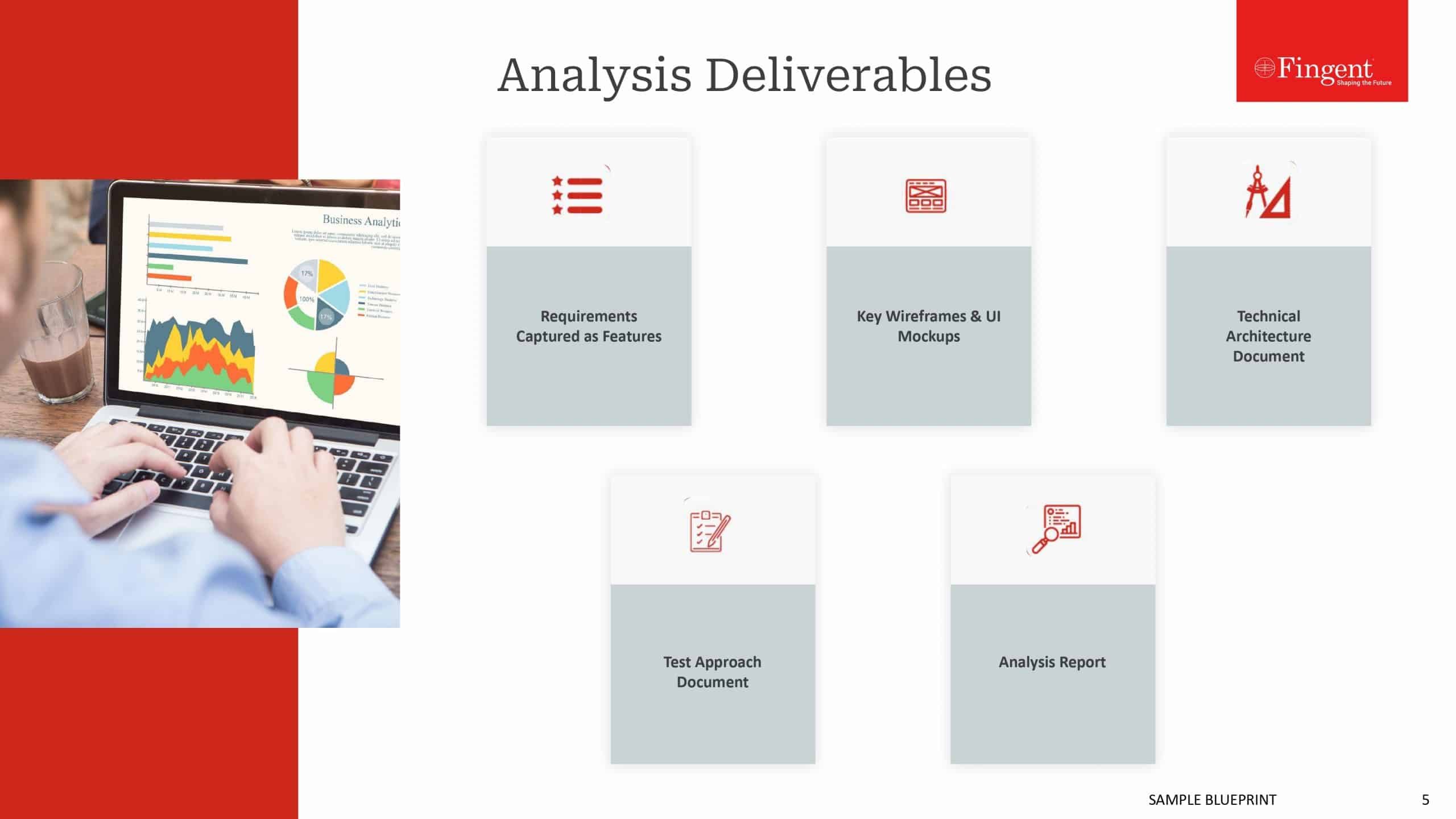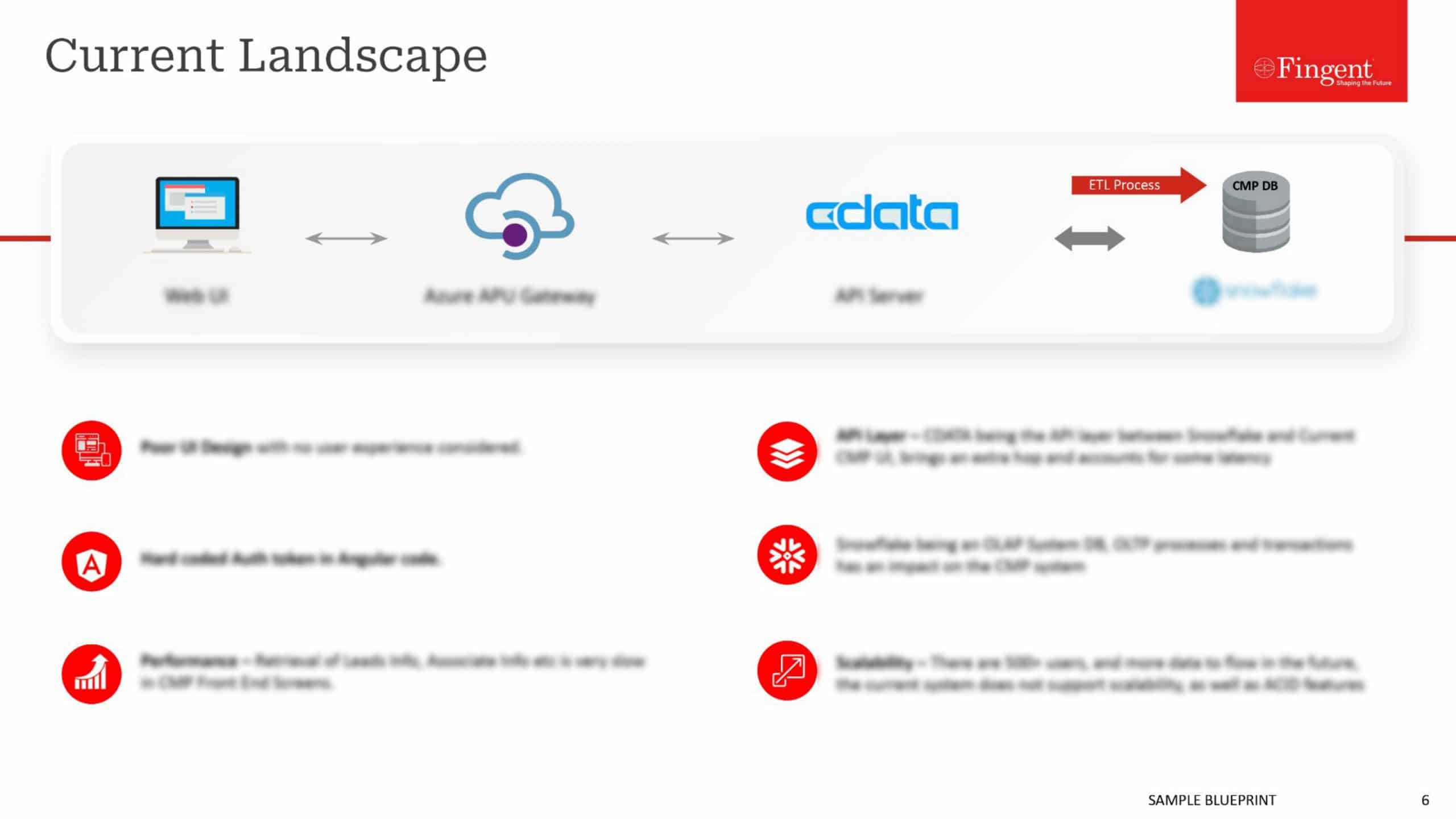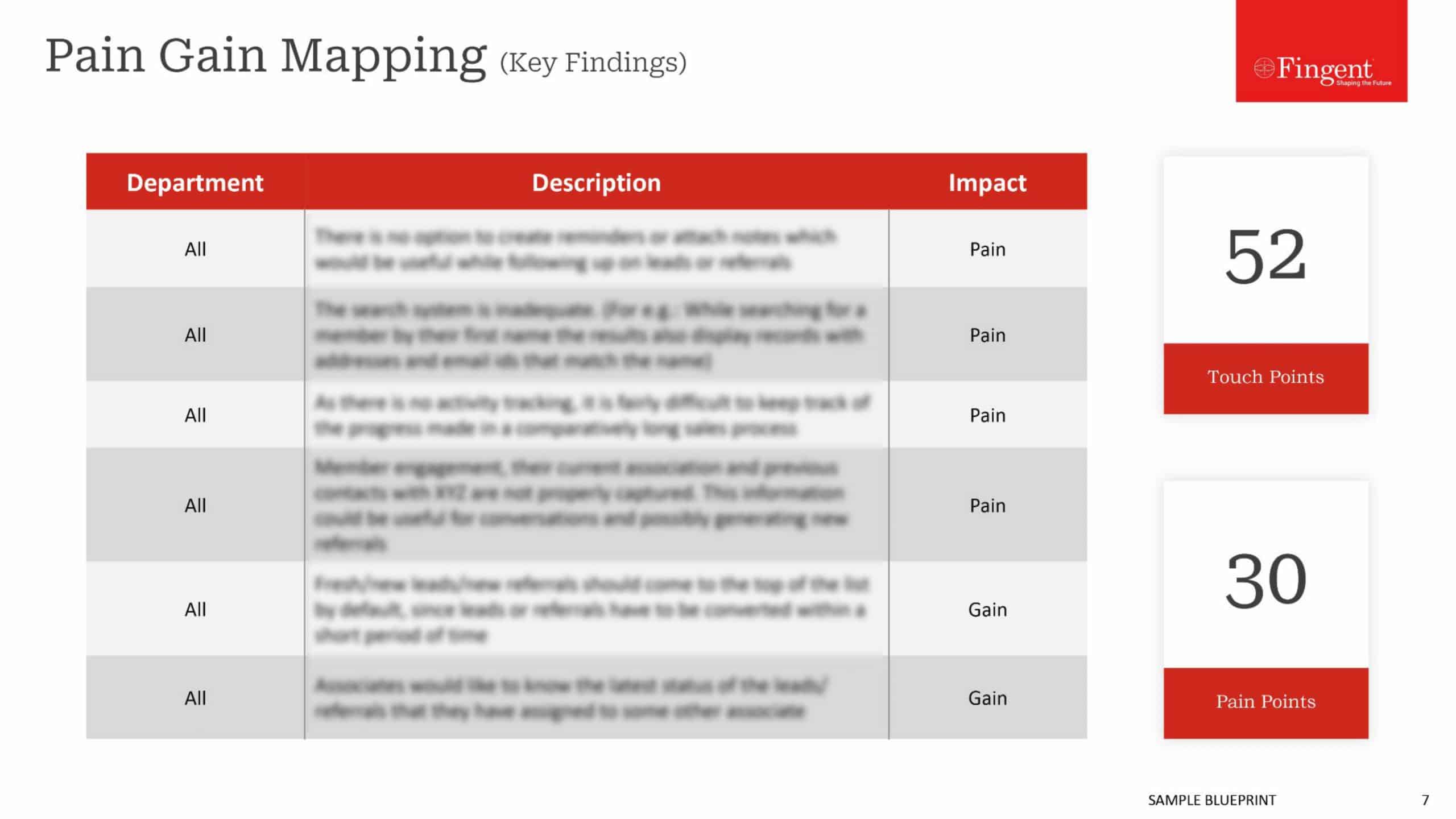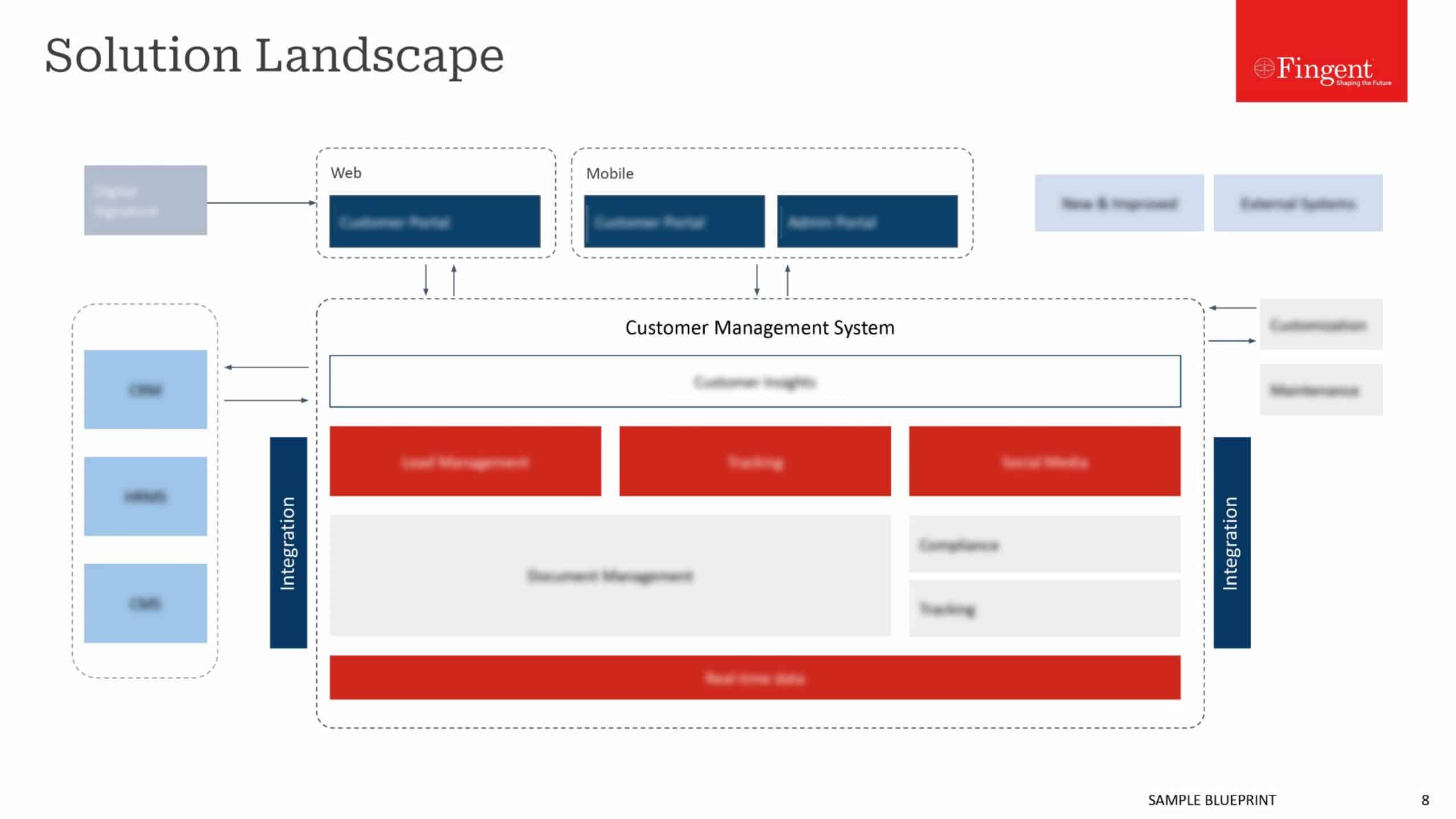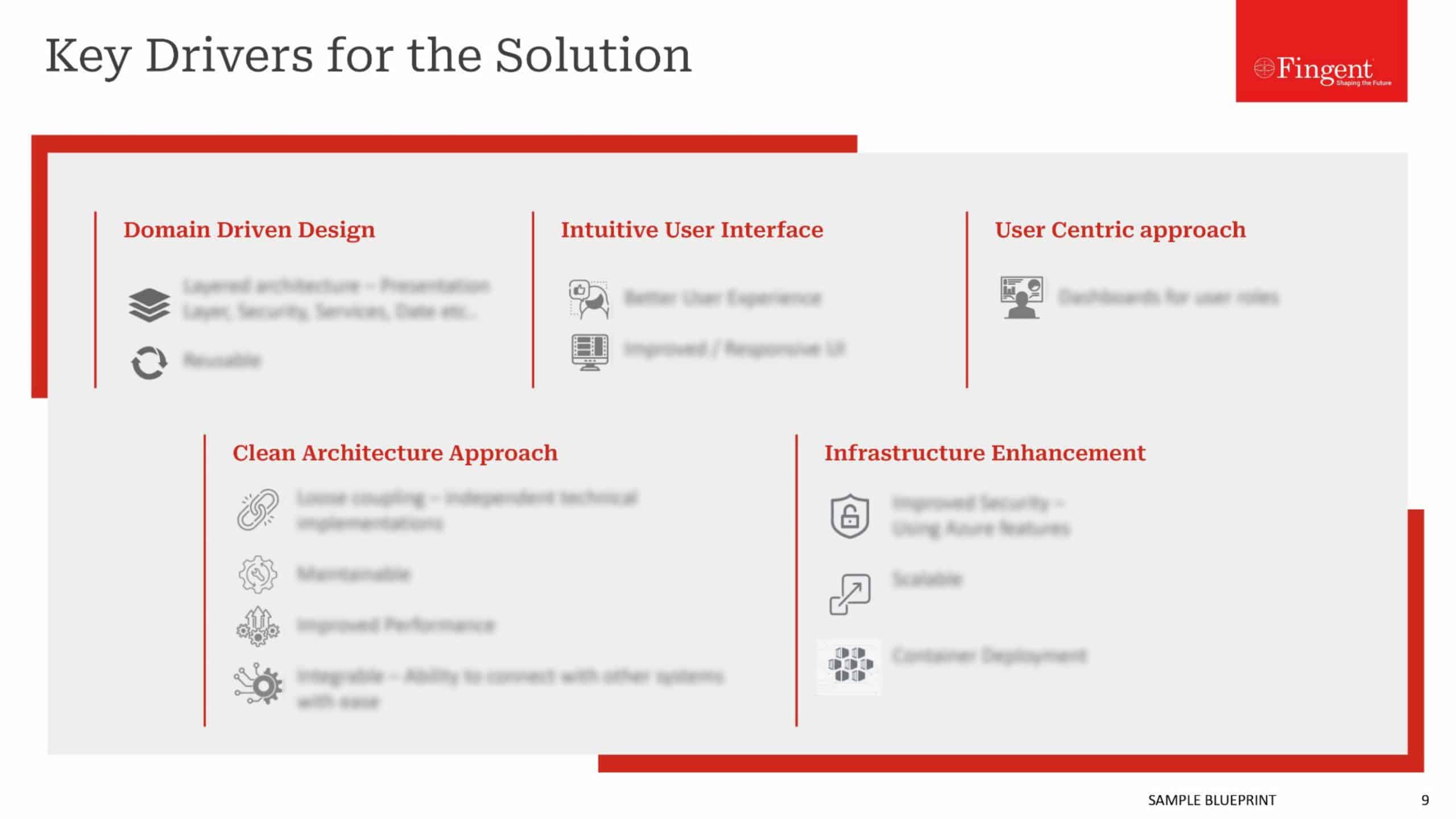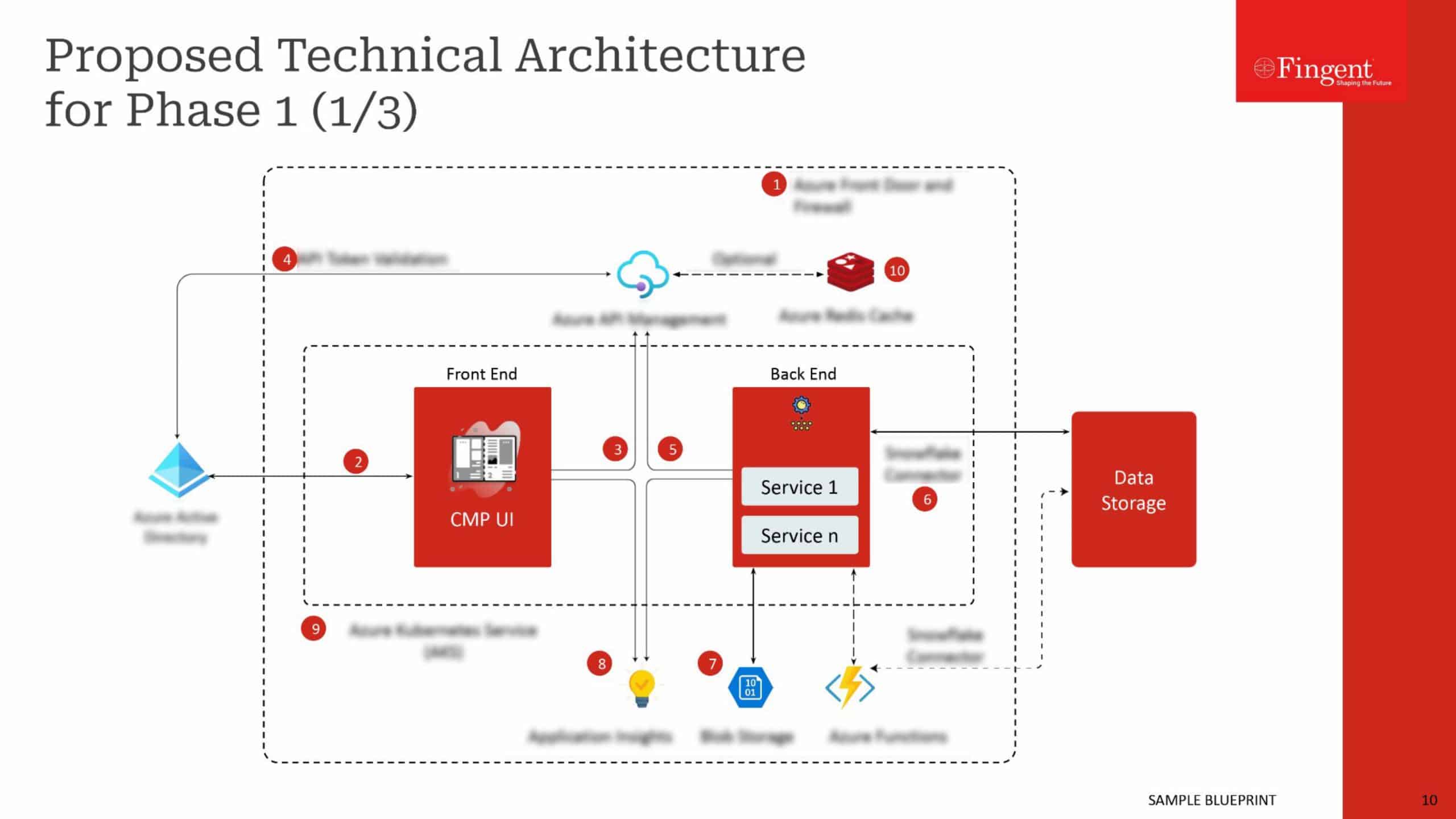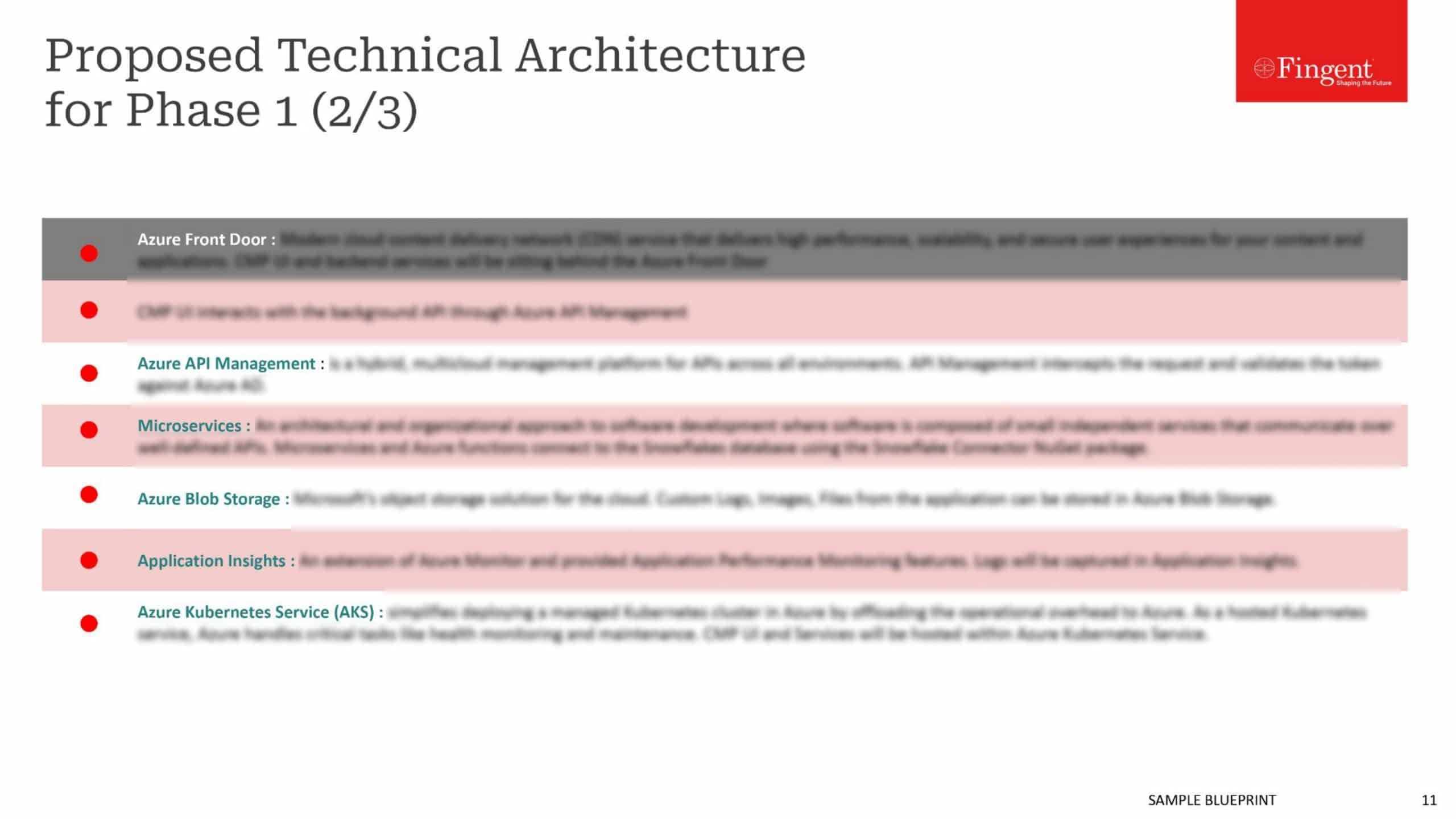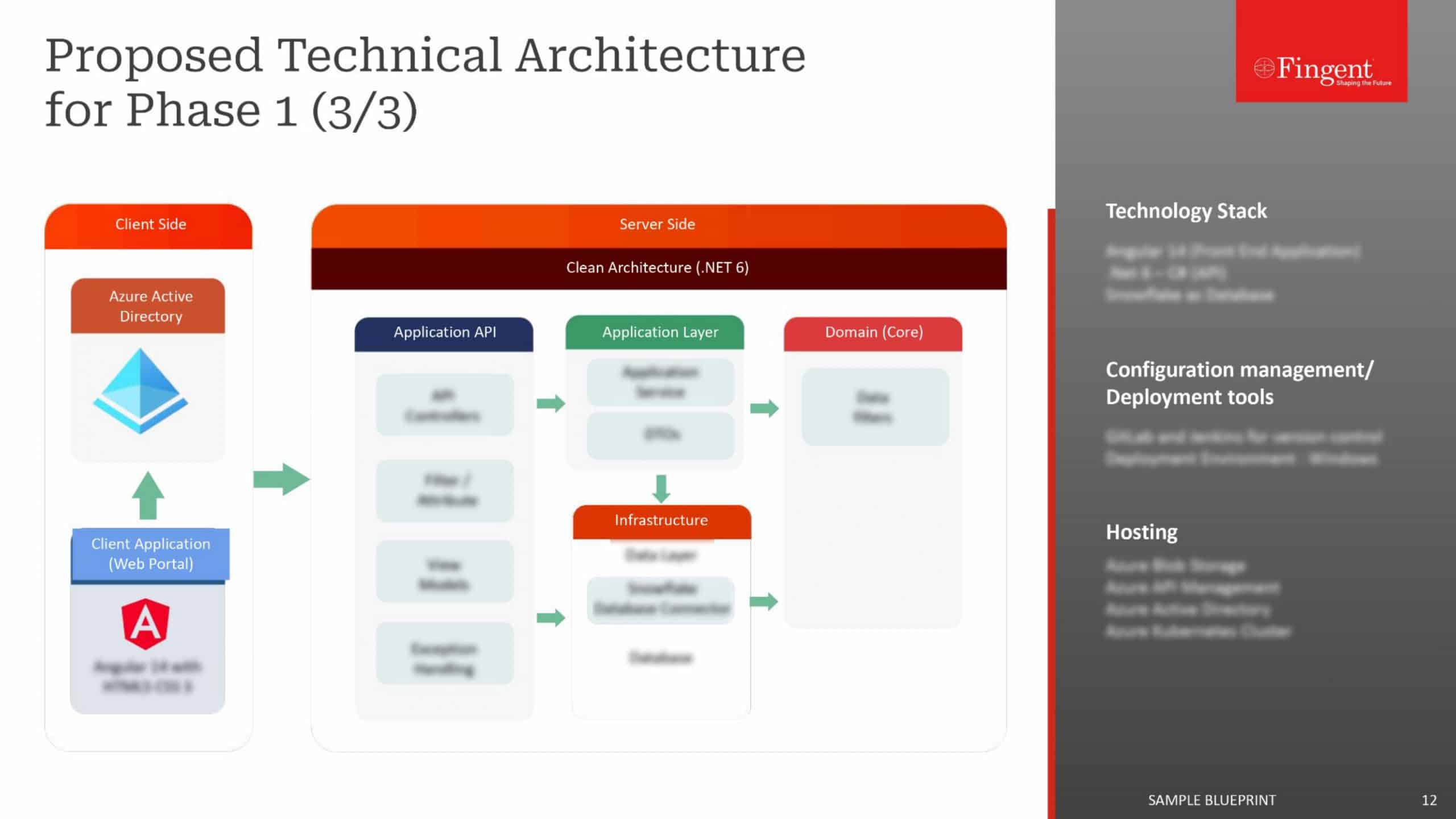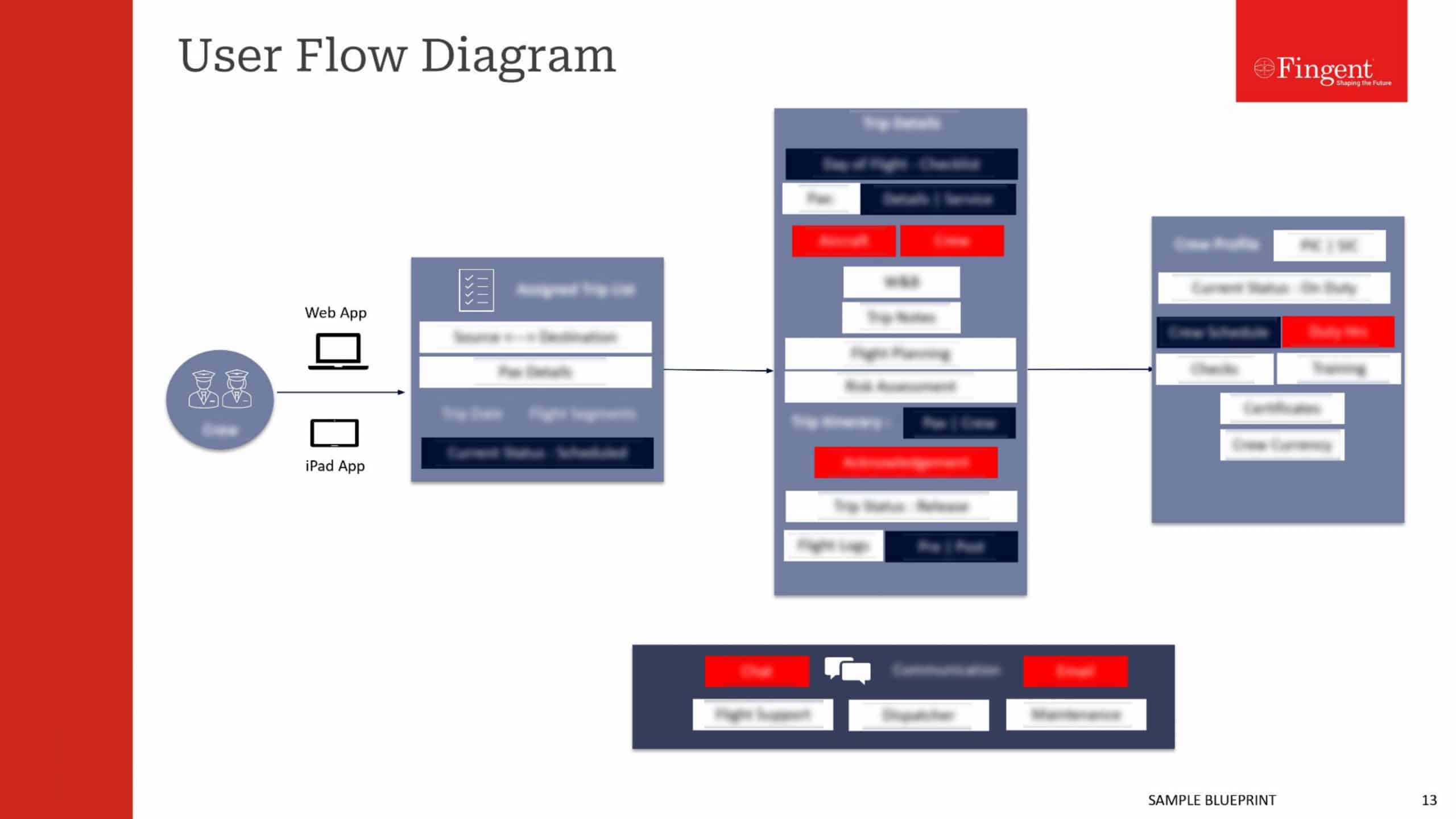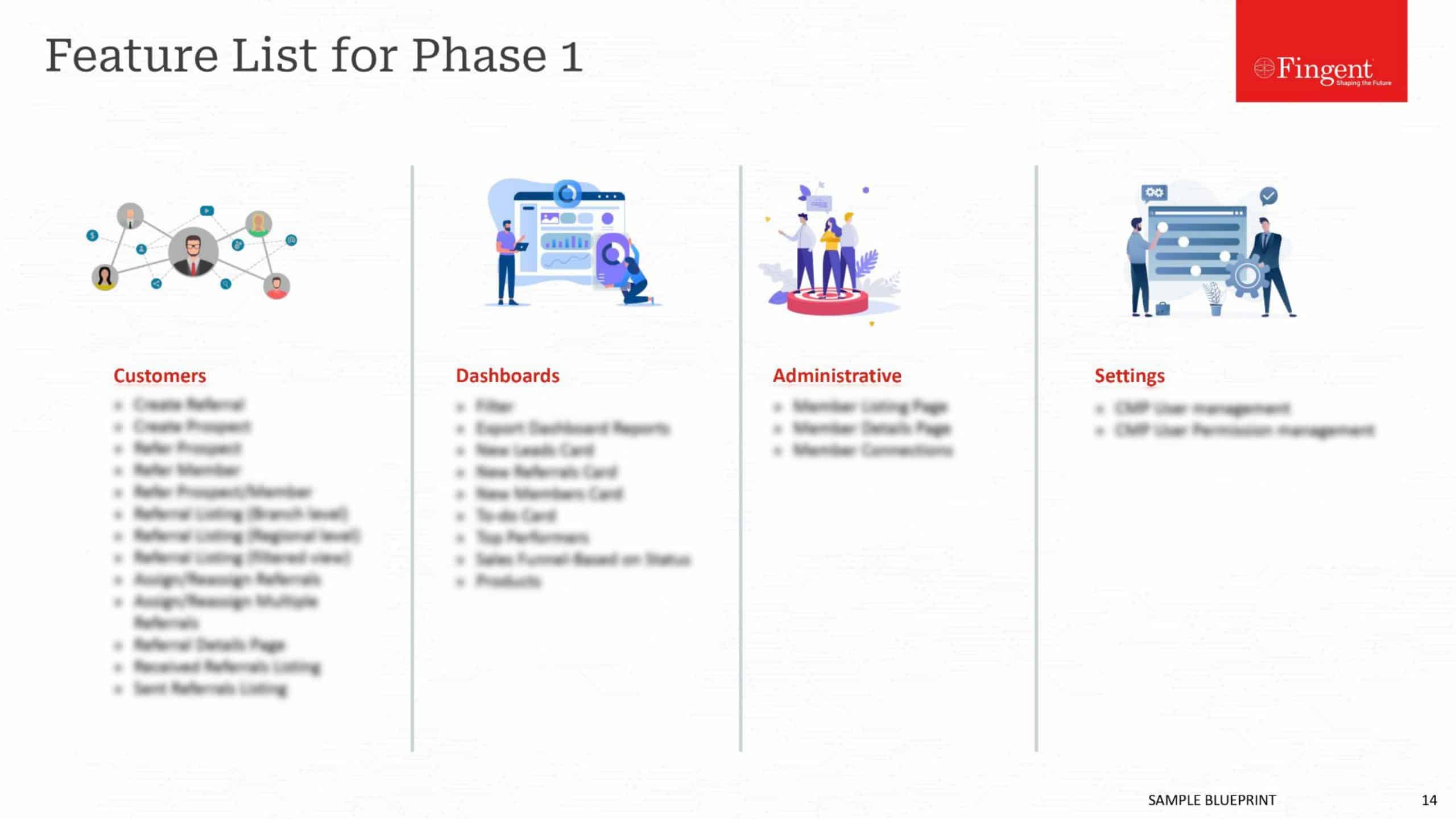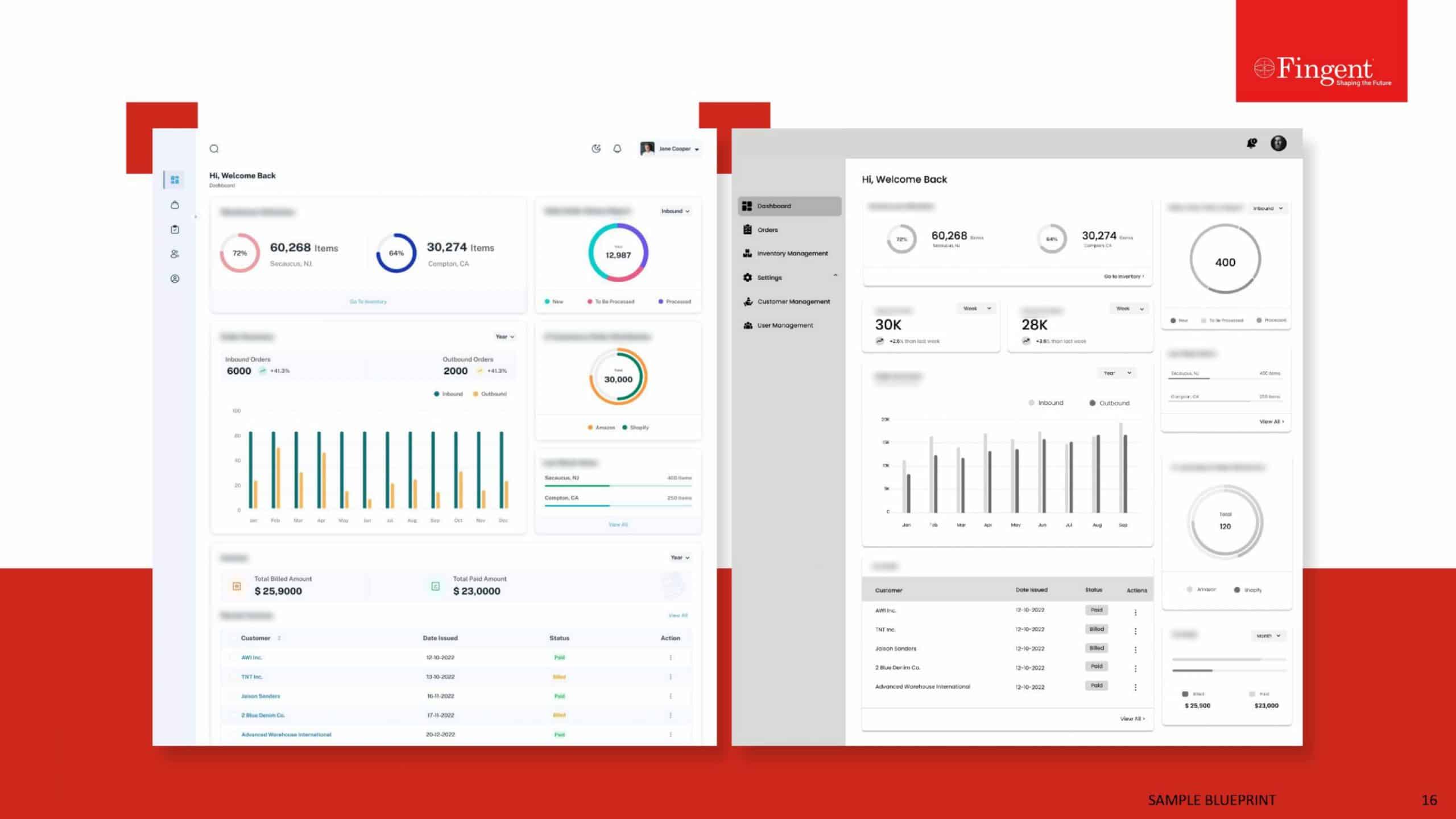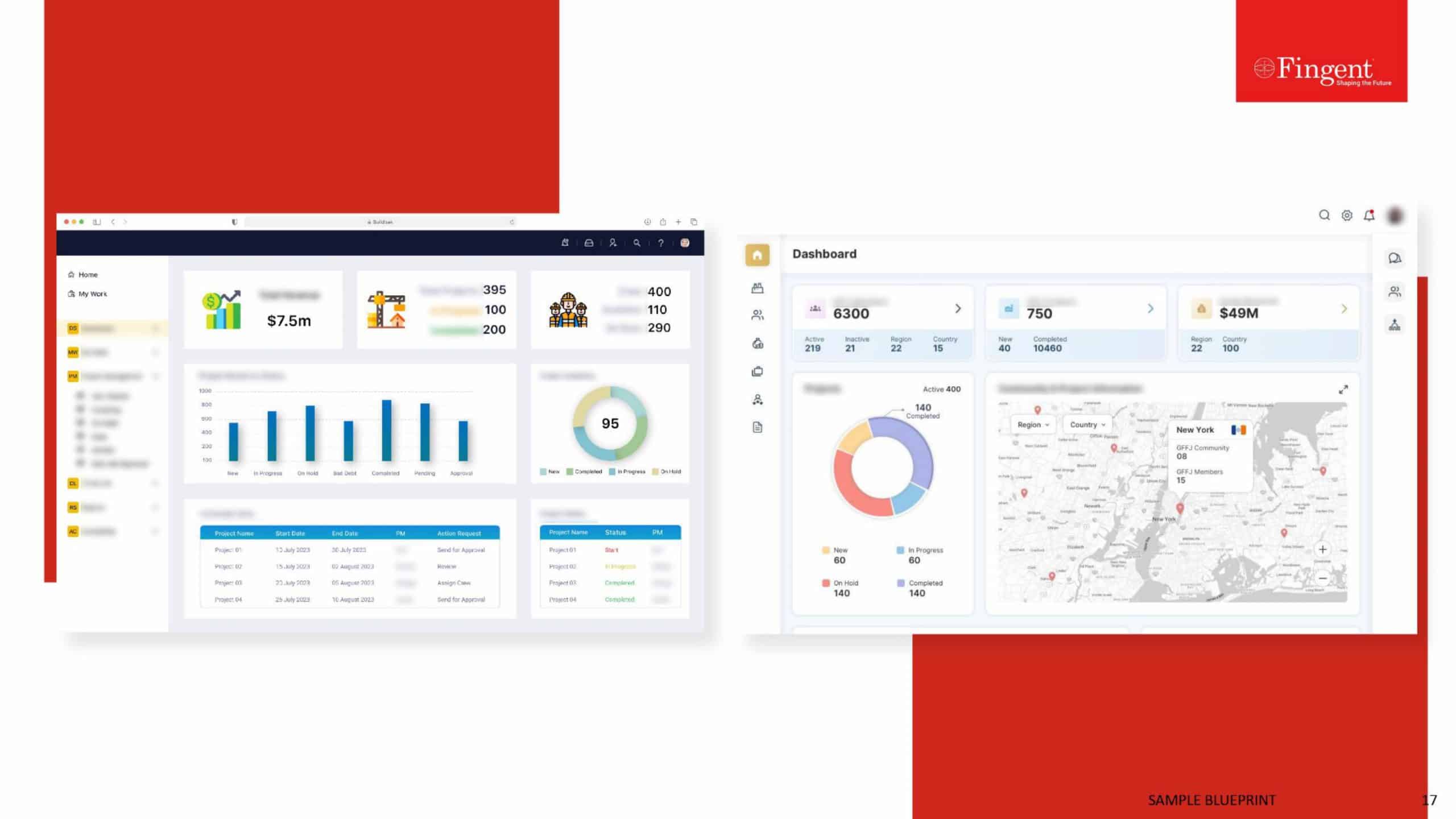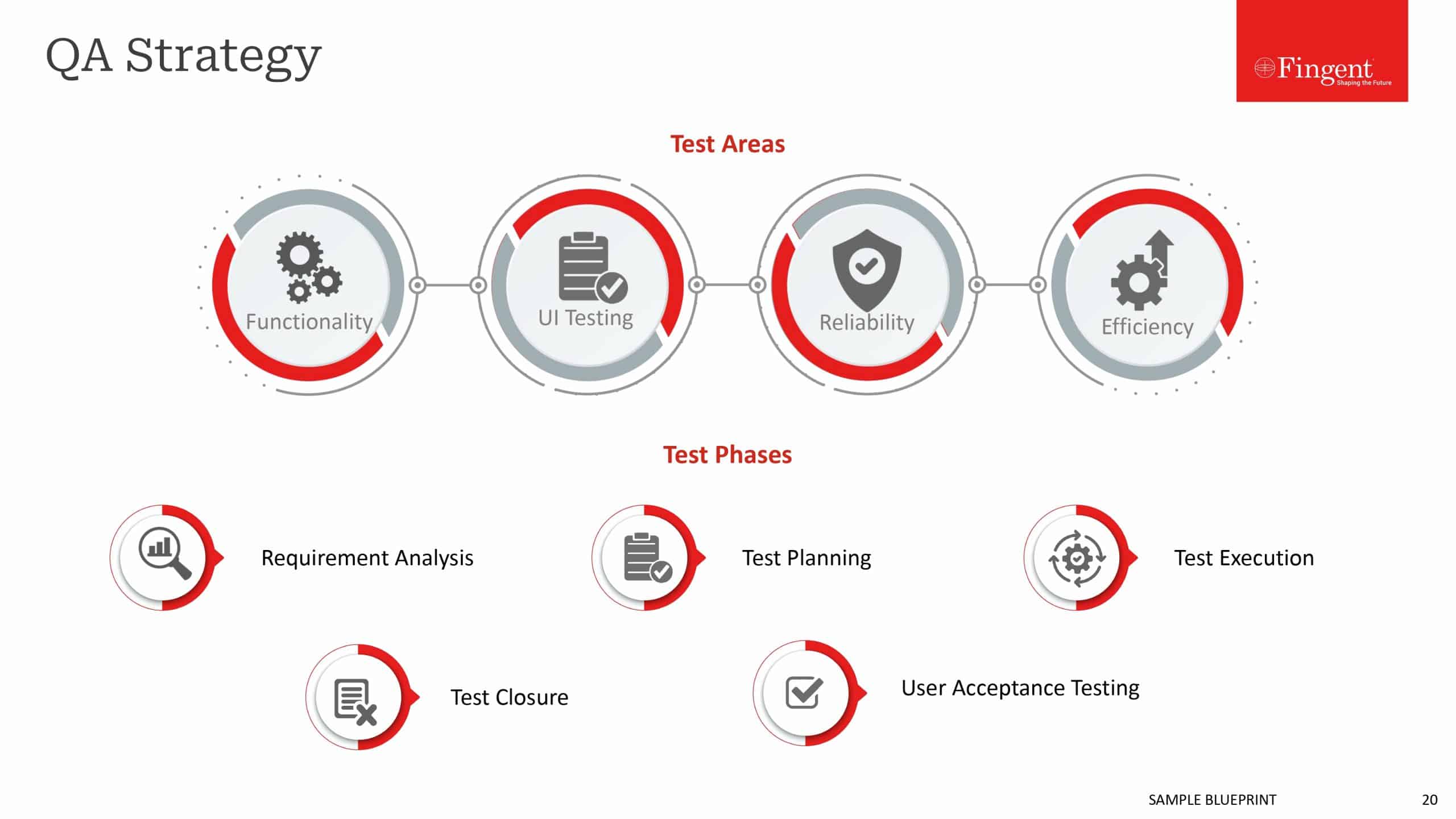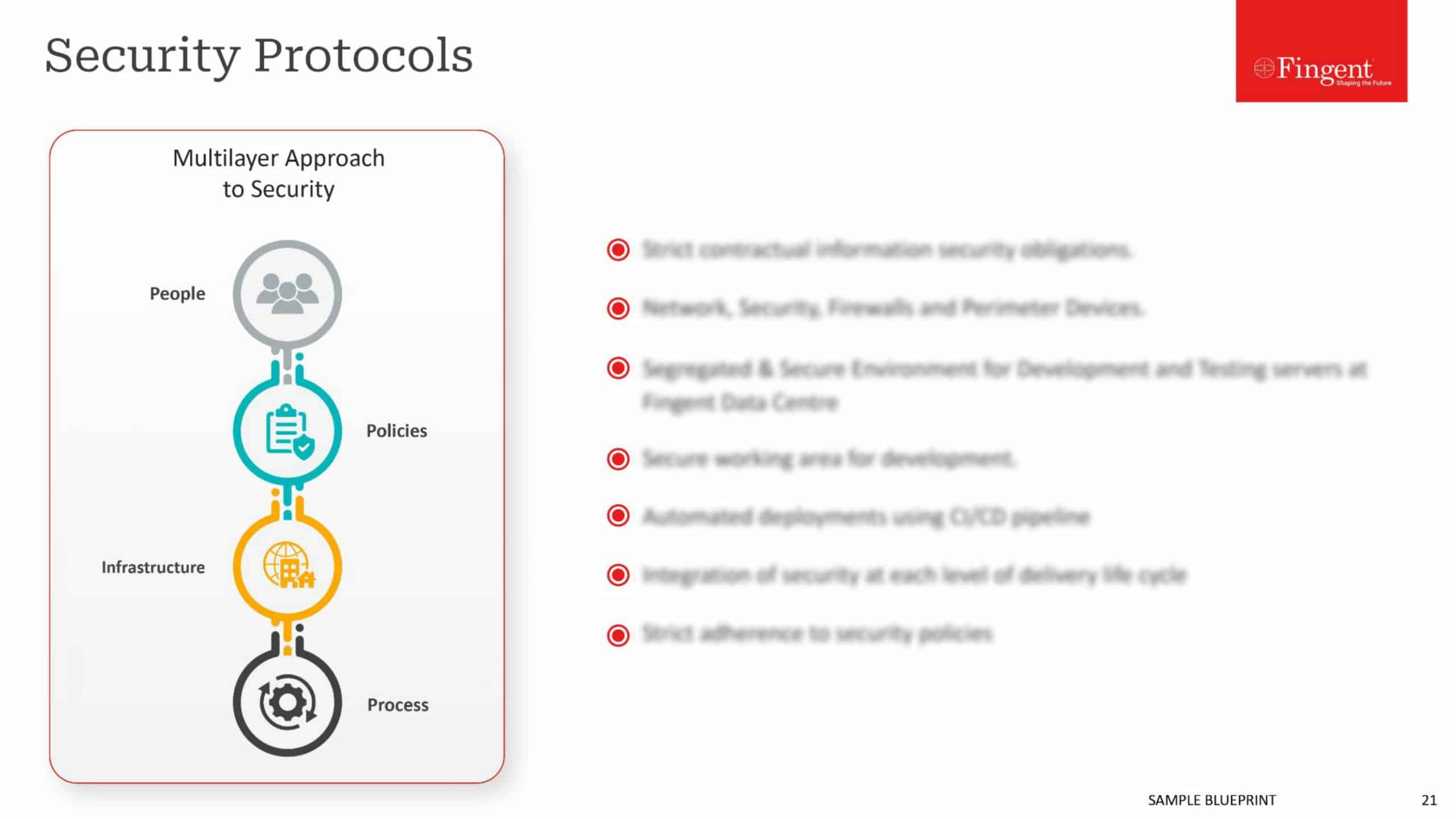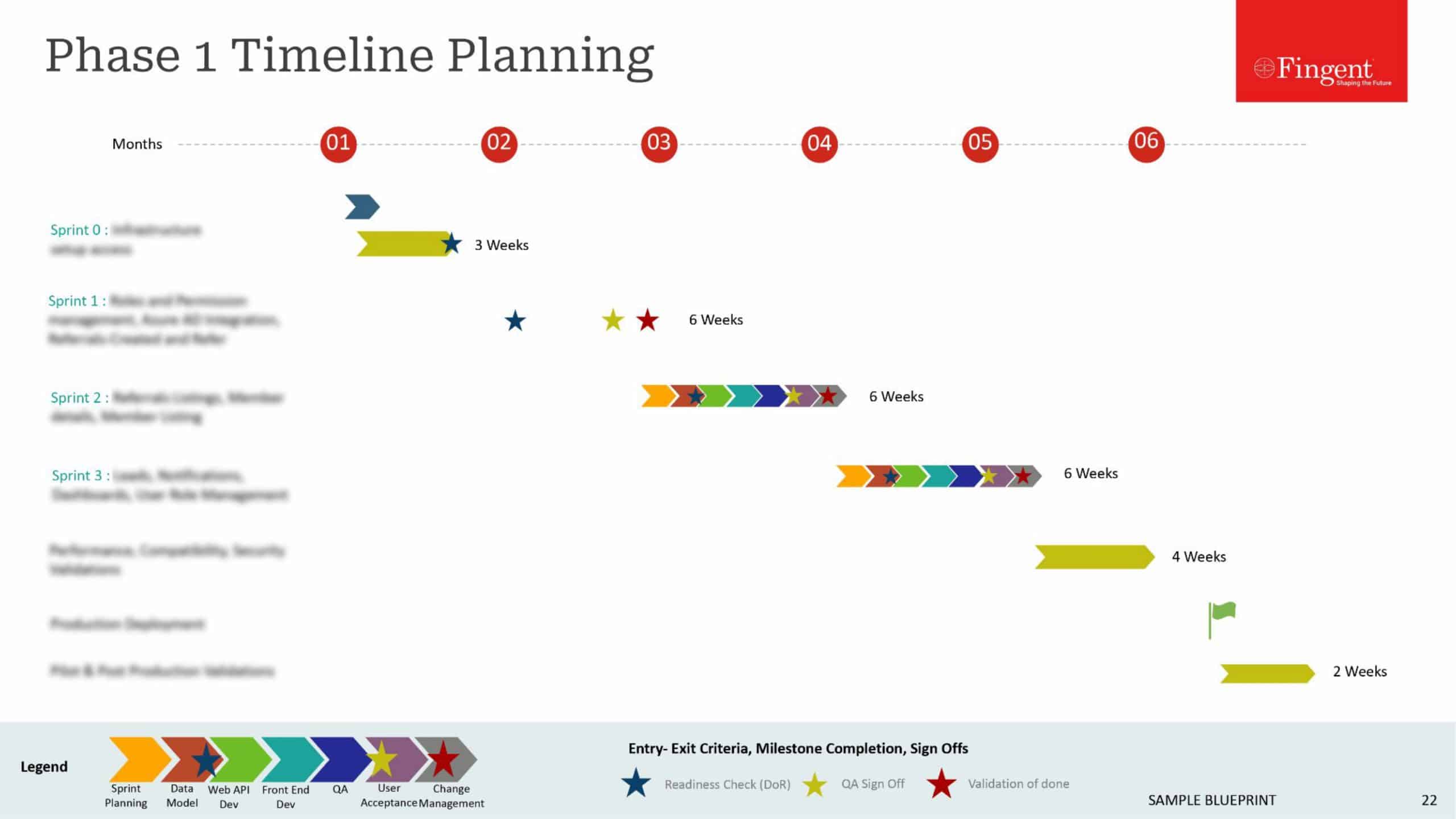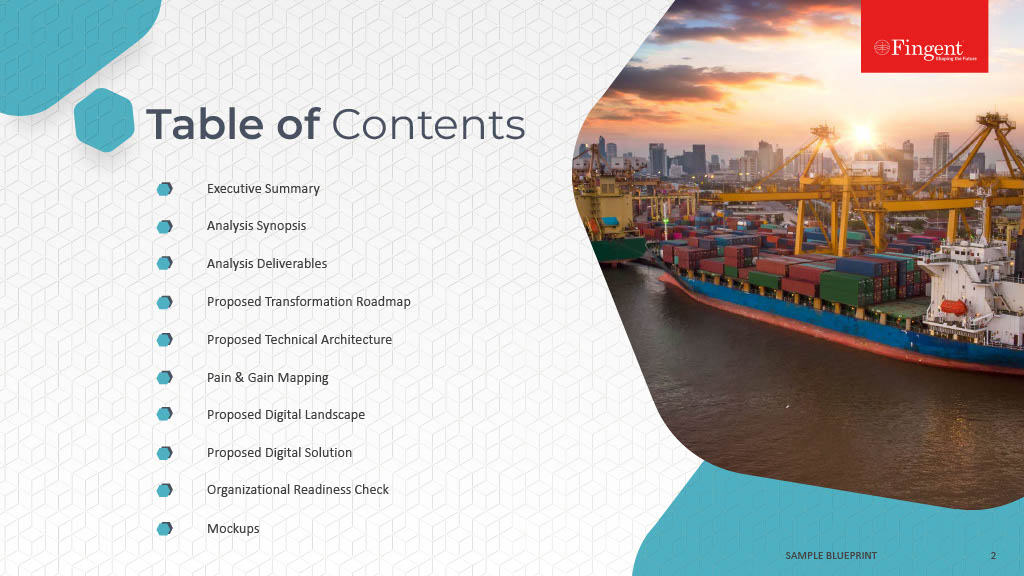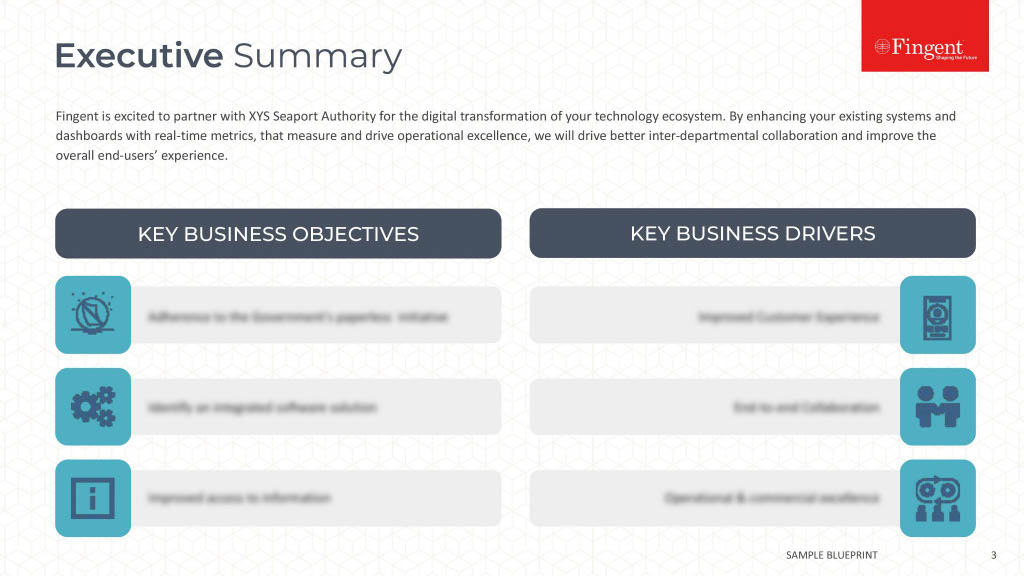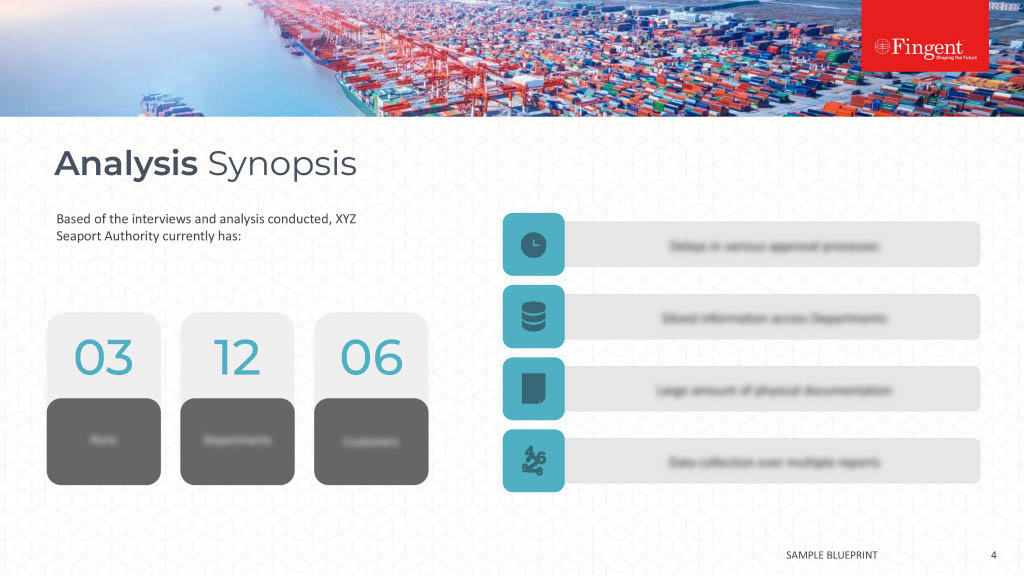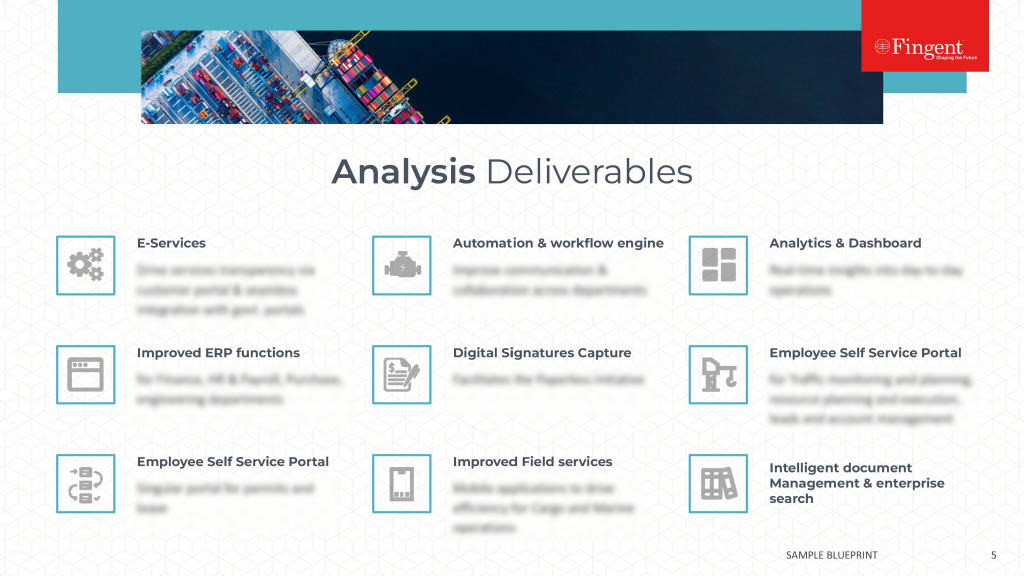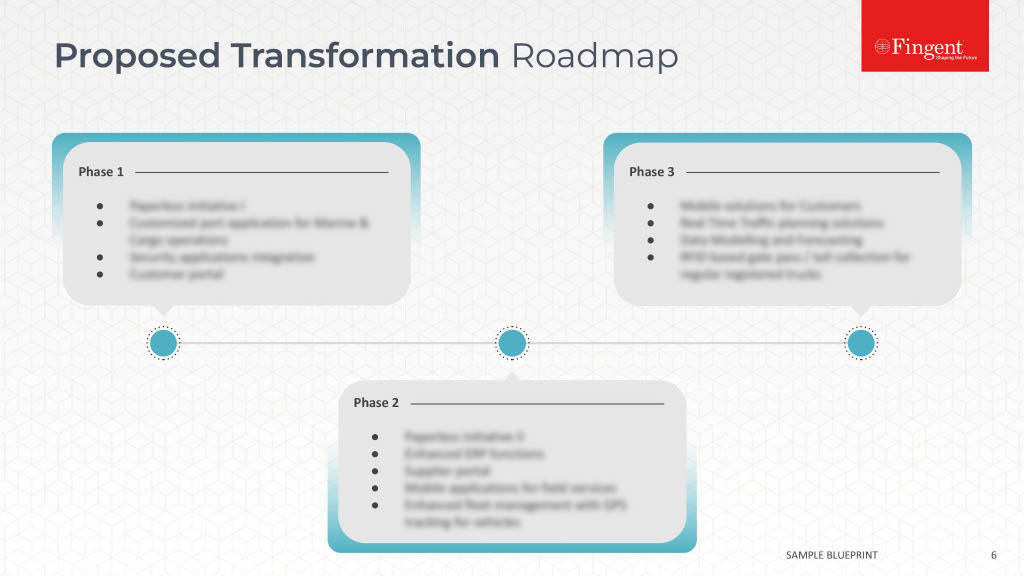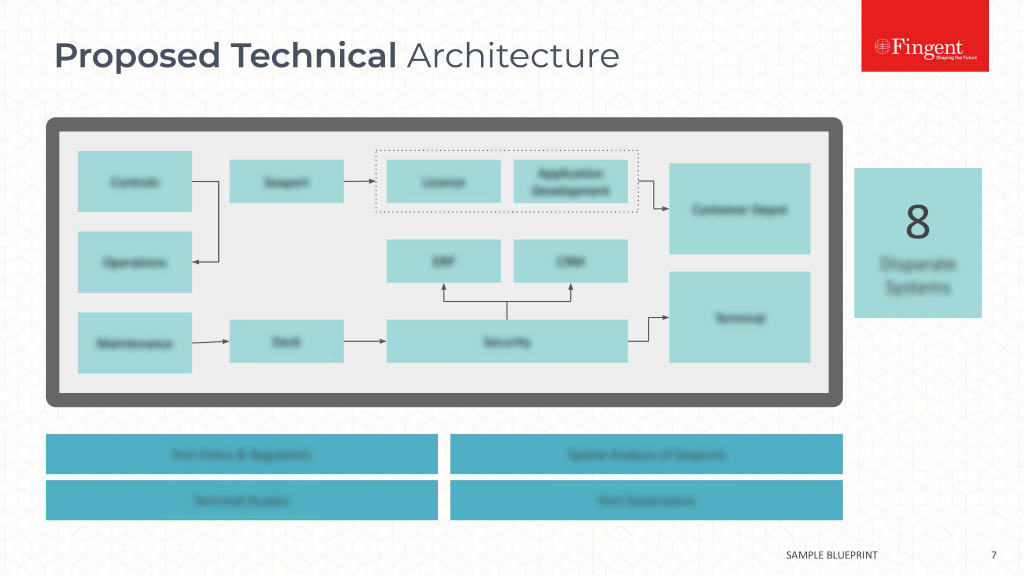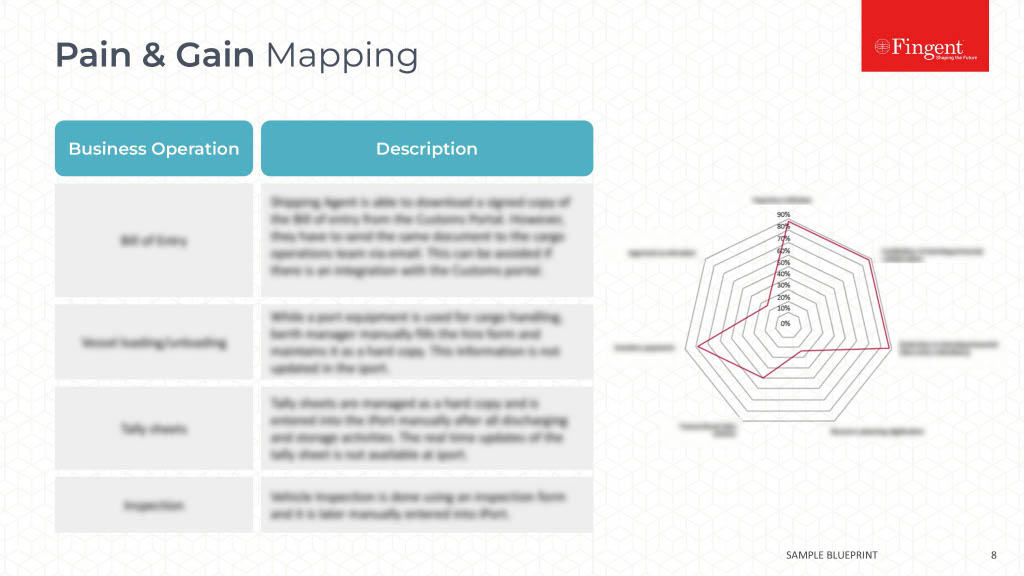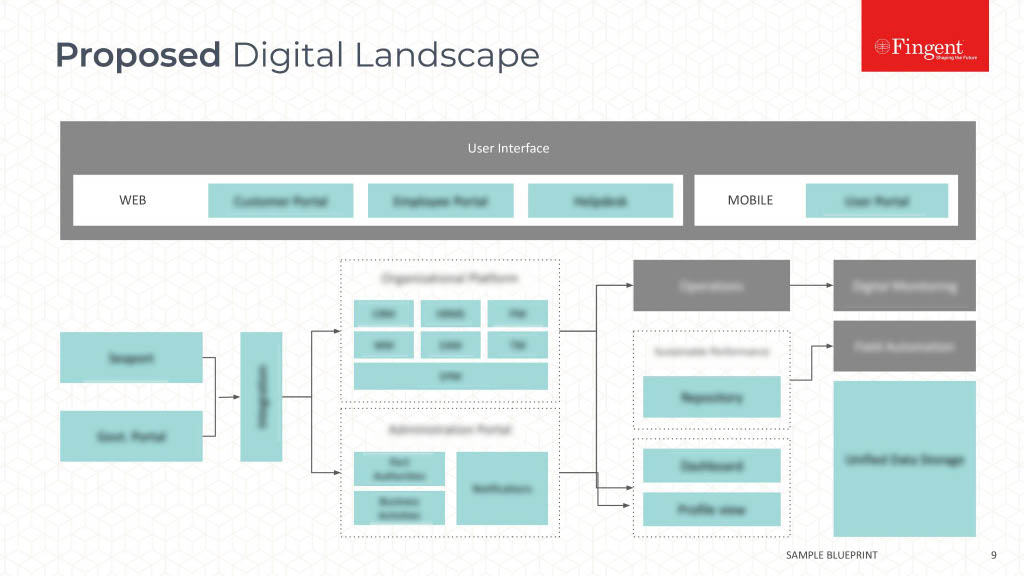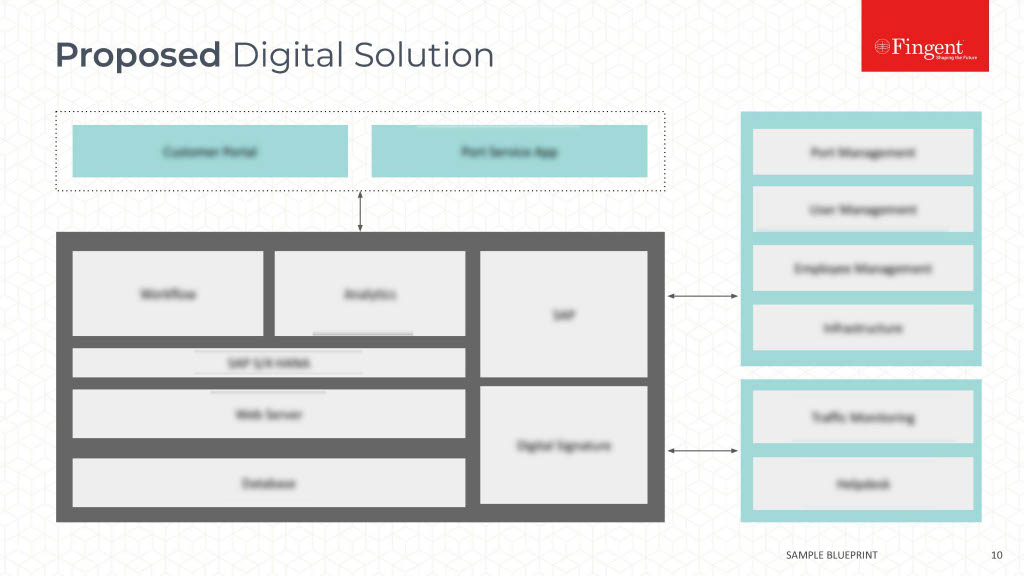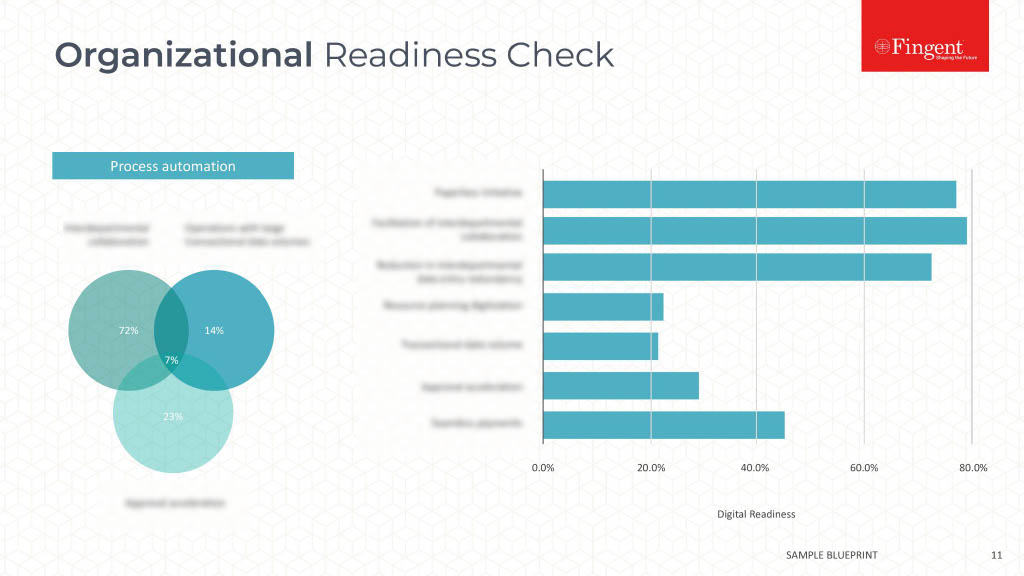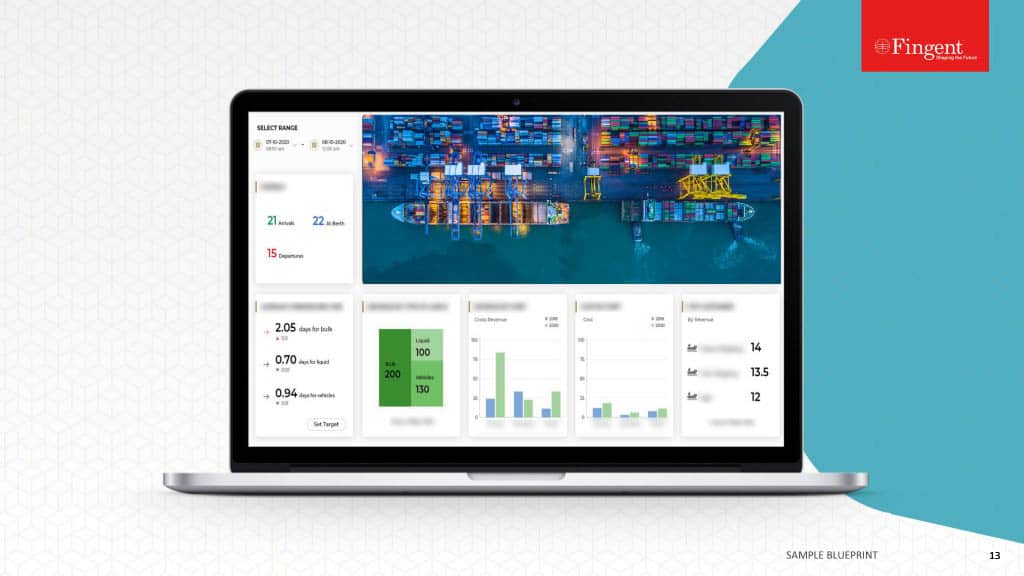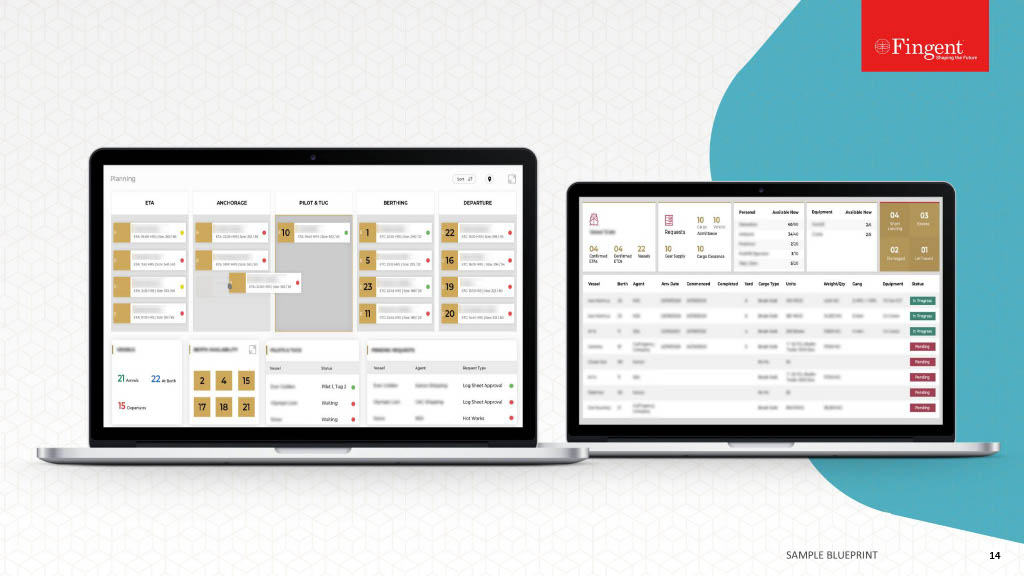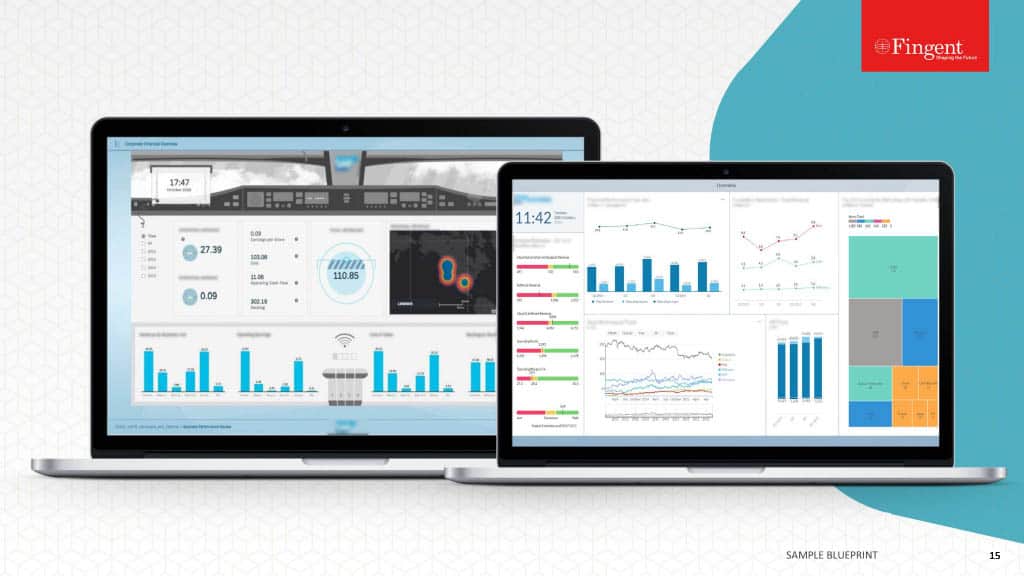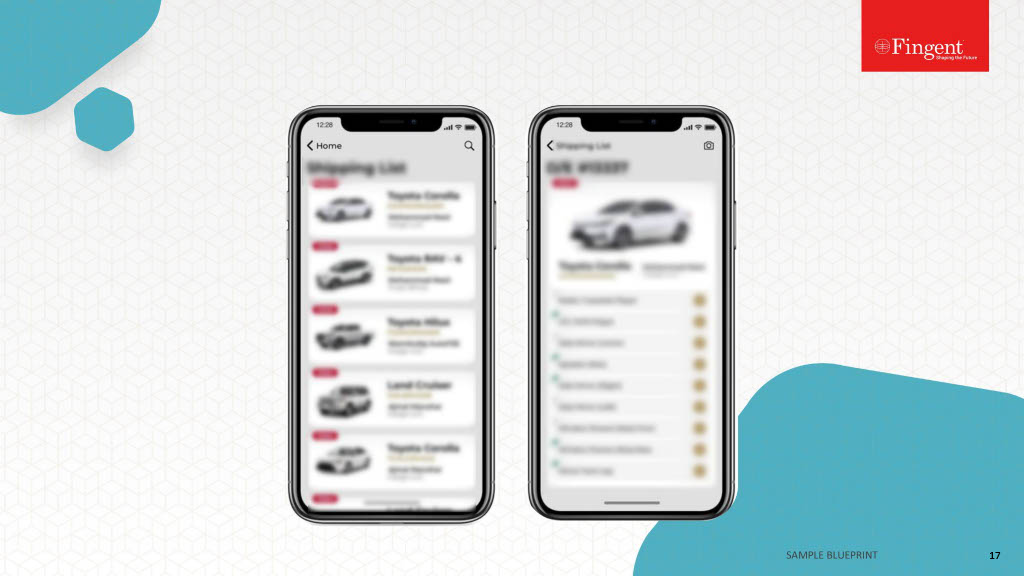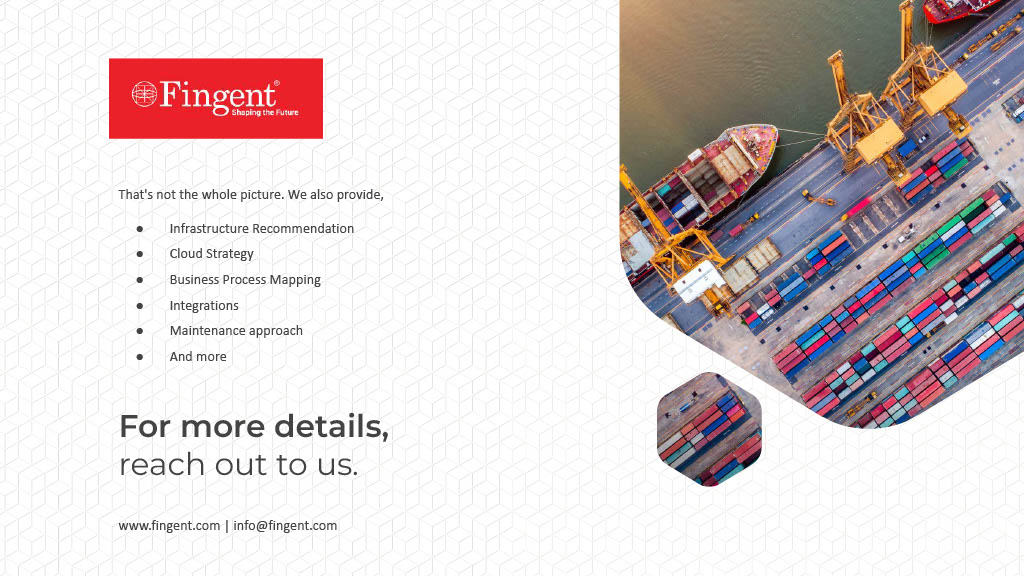Category: Technology
As the world grapples with the challenges of climate change, soil degradation, and resource scarcity, agricultural organizations find themselves at a critical juncture. The urgency for adopting sustainable farming practices, amplified by the integration of custom software, has never been more pronounced. This blog explores the pivotal role of digital transformation in achieving sustainability, shedding light on why agricultural organizations should embrace this shift.
Why the Focus on Sustainable Farming?
The urgency stems from a dual challenge: preserving the environment and securing the economic viability of agricultural operations. Inefficient practices impact the bottom line, making sustainability not just a moral duty but a financial necessity.
The Impact of Digital Transformation in Agriculture
Digital transformation, powered by Artificial Intelligence (AI), Data Analytics, and Cloud solutions, represents a seismic shift in farming approaches. The focus isn’t on whether to adopt these technologies but on how fast agricultural organizations can leverage them for sustainable growth.
To understand why agricultural organizations should embrace digital transformation, let’s consider some use cases.
1. AI in Agriculture: Precision Farming for Optimal Results
Use Case: Crop Yield Prediction
One significant application of AI in agriculture is crop yield prediction. AI algorithms analyze historical weather patterns, soil conditions, and crop health data to forecast optimal planting times and expected yields. For instance, a predictive AI model can take into account variables like temperature, precipitation, and crop health data to help farmers make data-driven decisions, maximizing yield with minimal resource use.
2. Data Analytics: Informed Decision-Making in Real Time
Use Case: Soil Health Monitoring
Data Analytics plays a crucial role in monitoring soil health in real-time. Sensors placed in the soil collect data on moisture levels, nutrient content, and temperature. Data Analytics algorithms process this information, providing farmers with immediate insights into soil conditions. By understanding these factors, farmers can adjust irrigation, fertilizer application, and other practices to optimize crop growth.
3. Big Data: Navigating Trends for Long-Term Success
Use Case: Market Trend Analysis
Big Data is instrumental in analyzing market trends to help farmers make informed decisions about crop selection and pricing. By aggregating and analyzing data from various sources, such as global market trends, consumer preferences, and weather patterns, farmers can strategically plan their crop rotations and adapt to changing market demands.
4. Cloud: Scalability and Flexibility for Modern Farms
Use Case: Remote Monitoring and Management
Cloud solutions enable remote monitoring of farming operations. Farmers can access real-time data on crop conditions, equipment status, and weather patterns from anywhere. This level of accessibility enhances decision-making and allows for timely responses to changing conditions.
Use Case: Collaborative Farming Platforms
Cloud-based collaborative platforms facilitate information sharing among farmers. This includes sharing insights on best practices, weather forecasts, and market trends. Such platforms promote collaboration, helping farmers make collective decisions for mutual benefit.
5. In-Depth Custom Software: Tailored Solutions for Agricultural Challenges
Elaborating on custom software solutions, let’s explore specific examples of how custom software has been tailored to address challenges in agriculture:
Example: Crop Management System
A custom Crop Management System can integrate AI and Data Analytics to provide farmers with comprehensive insights into crop health, soil conditions, and weather forecasts. This solution tailors its algorithms to the specific crops grown on a farm, offering personalized recommendations for irrigation schedules, fertilization, and pest control.
Example: Supply Chain Optimization Software
Custom software designed for supply chain optimization in agriculture integrates Big Data analytics. It tracks the entire supply chain, from harvest to distribution, optimizing routes, storage conditions, and inventory management. This ensures that produce reaches its destination in optimal condition, reducing waste and maximizing profitability.
Challenges in Leveraging Technologies in Farming Processes
Although the decision to implement technology in the farming process seems like a no-brainer, there have been a few challenges on the way.
1. Complex Procedures: Navigating the Intricacies
The adoption of technology in farming processes is not a simple plug-and-play endeavor. Farming operations are intricate and interconnected. Addressing these complexities requires a strategic approach that acknowledges the nuances of each operation.
2. Legacy Systems: Breaking Free from the Past
Many agricultural operations are shackled by legacy systems that were implemented in a different era. These systems, while once effective, now hinder the integration of modern digital solutions. Overcoming this challenge involves strategic investments in upgrading or replacing outdated infrastructure.
3. Staff Onboarding: Bridging the Knowledge Gap
The success of digital transformation hinges on the people behind the technology. Onboarding staff with new technology presents a unique set of challenges, from upskilling the existing workforce to recruiting new talent. A comprehensive training strategy is essential to ensure that the human element seamlessly integrates with the digital landscape.
As the farming industry stands at the crossroads of tradition and innovation, the role of custom software becomes increasingly pivotal. So, let us explore how custom software serves as the linchpin in driving the right digital transformation for agriculture.
Custom Software: Tailoring Innovation to Agricultural Realities
Custom software addresses the complexities of modern farming, offering tailored solutions that off-the-shelf options often lack. It eases the digital transformation journey, ensuring a seamless integration of technology into existing processes. Here are some ways in which challenges can be addressed:
- Addressing Procedural Complexity: Custom software streamlines intricate procedures without disrupting established workflows, ensuring a seamless integration of new technologies.
- Compatibility with Legacy Systems: Designed to coexist with legacy systems, custom software serves as a strategic bridge, preventing the need for a costly infrastructure overhaul.
- Staff Empowerment through Training Solutions: Custom software includes comprehensive training modules, empowering staff to leverage the full potential of new technologies.
How Can Fingent Help?
At Fingent, we understand that the path to sustainable and efficient farming is paved with innovative, custom solutions. Our expertise extends across three crucial phases of the digital transformation journey: discovery, development, and implementation.
- Discovery Phase: Fingent collaborates closely with agricultural businesses to identify opportunities for digital transformation. Through meticulous analysis, we uncover areas for improvement in resource management, data utilization, and operational efficiency.
- Development Phase: Armed with insights, our seasoned developers craft custom software solutions designed to address the unique challenges of each farm. From precision farming tools to supply chain management systems, our goal is to optimize operations and enhance overall efficiency.
- Implementation with 24/7 Backup: The journey doesn’t end with software development. Fingent provides robust implementation support with 24/7 backup, ensuring a smooth transition into the digital landscape. Our commitment is to minimize disruptions and maximize the benefits of sustainable farming practices.
A Greener Tomorrow, Powered by Digital Innovation
In the journey towards a sustainable future for farming, digital transformation is paramount. Custom software is the linchpin, simplifying complexities and seamlessly integrating technology into agricultural operations. At Fingent, we stand ready to be your dedicated partner, discovering opportunities, crafting tailored solutions, and offering unwavering support. With the right custom software, your farm can lead the way to a greener tomorrow.
Give us a call, and let’s get talking.
Stay up to date on what's new

Featured Blogs
Stay up to date on
what's new



Talk To Our Experts
Which transformation path aligns with your business objectives? This is a critical question to ask when designing your business transformation journey. This makes it vital to take the time to know all the available options. It is also important to consider all aspects of each option and their implications before you embark on your business transformation. This blog will explain all you need to know about the new SAP S/4HANA Cloud 2111 release. It will also describe how SAP S/4HANA Cloud 2111 helps in solving business issues.
What is SAP S/4 HANA Cloud?
SAP S/4 HANA Cloud is an intelligent Enterprise Resource Planning (ERP) system. It has built-in intelligent technologies like ML, AI, advanced analytics.
It helps organizations smoothen their business transformation by assisting them in adopting new business models and managing business change at speed. Also, it can orchestrate internal and external resources while using the predictive power of AI.
SAP S/4 HANA Cloud can empower businesses to consistently outperform with instant intelligence and actionable insights. It can be implemented quickly and reduce support costs.
Now that we know what SAP S/4 HANA Cloud is, let’s understand what is the difference between the old SAP S/4 HANA Cloud version and the new version.
Read more: SAP S/4 HANA: Transforming CFO’s into a Business Value Creator and Role Model
Difference Between the Earlier SAP S/4 HANA Cloud Version And The New 2111 Version
Many think that SAP S/4 HANA Cloud 2111 builds on the earlier version. In fact, the latest version exceeds the earlier version. It has increased flexibility in the consolidation process. This means users can now create additional customer individual consolidation unit attributes. These help in defining validation rules.
SAP S/4 HANA Cloud 2111 comes with enhanced core consolidation rules. These include more flexibility in source and destination rules. Companies can now benefit from an improved ‘import consolidation master data’ app. This new feature helps users gain time and makes maintenance easier.
Along with many other enhanced features, SAP S/4 HANA Cloud 2111 now provides enhanced movement flow management. This means that SAP customers can have full control over the ‘default subitem’ field allowing them to edit and assign default subitems.
How Can Your Industry Leverage The New SAP S/4HANA Cloud 2111?
SAP S/4 HANA Cloud 2111 brings many exciting innovations to various industries. Here are some examples:
1. Manufacturing
The newer version has revised the SAP Fiori app. The ‘Maintain Tim-Dependent Stock Levels’ option is specifically designed for the manufacturing industry. It allows its users to display, create, and update time-dependent stock levels for specific materials.
Manufacturers can define safety stock levels based on validity intervals. This enables them to react to varying demands dynamically. By ensuring sufficient stocking of products at all times, users can reduce deficiency risk.
2. Supply chain management
To support supply chain management SAP Fiori app is enabled to support split valuations in the goods-receipt process. This allows users to create their own global valuation types.
3. Service companies
SAP S/4 HANA Cloud 2111 has enhanced service order planning based on spare part reservations. This enables customer service managers to gain better insights into stock availability and to ensure that planned quantities of spare parts are always at hand. Such accurate service order planning ensures on-time delivery.
4. Finance
SAP S/4 HANA Cloud 2111 provides SAP Fiori apps in ‘collections and dispute management.’ This modernized process offers extensibility options that help the app deliver a seamless user experience.
These new apps improve the process of collecting receivables and handling dispute cases. Along with several other features, it provides in-depth data insights to its users.
Read more: 6 Capabilities of SAP S/4HANA That Will Help You Become An Intelligent Enterprise
4 Top Challenges SAP S/4 HANA Cloud 2111 Helps Resolve
1. Project management
The latest release SAP S/4HANA Cloud 2111 allows project managers to plan, trigger and monitor materials or services enabling them to ensure on-time delivery.
Here is how it helps resolve challenges in project management:
- Date alignment is accelerated by reducing manual efforts leading to more accurate planning of project demands.
- Purchase contract for specific demand.
- Automatic demand blocking prevents requesting for unrequired demands.
- It provides a comparison chart for improved monitoring.
2. Sales
SAP Self-Billing Cockpit allows users to receive and process self-billing messages, edit messages, and receive multiple order reasons and condition types in case of errors or differences. This latest feature offers a central entry and overview page to its users, leading to a more efficient sales process.
3. Product compliance
Monitoring of substance volumes will help users to comply with chemical regulations. It is integrated with the logistic processes of purchasing and manufacturing.
Substance Volumes Tracking feature enables users to identify possible risk factors. It can track, calculate, monitor volumes for substances either imported or produced within the country.
This will help users to define legal entities and map production plants. Thus, it increases transparency by directly linking the aggregated substance volumes to the original logistic documents.
4. Asset management
SAP S/4HANA Cloud 2111 introduces four process phases:
- Reactive maintenance
- Proactive maintenance
- Improvement maintenance
- Operational and overhead maintenance
Process phases help in creating specific maintenance requests for technical objects like functional locations or a piece of specific equipment.
These requests allow users to store relevant information that will help the employees to identify and solve any problems that might occur. Such simplified work requests for maintenance reduce the unnecessary effort for logging maintenance issues.
Read more: How Fingent Helps CFOs Gain New Insights and Reliably Enable Key Decisions
How Does Fingent Smoothen Your Transit To SAP S/4HANA Cloud 2111?
SAP S/4HANA Cloud 2111 can empower your business to stay relevant and competitive. Fingent is a leading SAP Silver partner. To be classified as an SAP silver partner there are certain rigorous criteria that a company must meet around SAP certification and dedicated SAP resources.
We offer a broad range of services under the umbrella of SAP. This includes business consultation, implementation, and post-implementation services and support.
Take a look at our Case Studies to see how we have implemented various aspects of SAP for our clients.
We work with our customers from pre-planning through to project execution and application support. We assure you that you will receive the best possible care in the long term. Give us a call and let’s discuss your project.
Stay up to date on what's new

Featured Blogs
Stay up to date on
what's new



Talk To Our Experts
“Freelancer Reliance Rises in US, With 20% of Work Done by Them” – Bloomberg article based on a survey conducted by Harvard Business Review Analytic Services.
In the ever-evolving landscape of business efficiency, traditional staffing models are taking a backseat. Companies are shifting gears, embracing a panoramic perspective on talent that goes beyond the confines of full-time staff. The key to staying competitive? Embracing the freelance workforce. Join us as we unveil why hiring freelancers has become the cornerstone of staying ahead in the dynamic business arena.
Why the Freelancer Surge?
Imagine a workforce that ebbs and flows like a river, adapting to the contours of projects, surging with creativity, and saving on costs like a well-calibrated machine. This is not a utopian vision but a tangible reality, as revealed by a recent survey conducted by Harvard Business Review Analytic Services.
The survey provides valuable insights into the current state of freelancer reliance among US companies. According to the survey, a significant number of respondents expressed anticipation for an uptick in their reliance on freelancers. It reveals that on average, 20% of organizations’ work is currently executed by freelancers.
Perhaps the most telling aspect of the survey is the forward-looking perspective. Over half of the respondents foresee their organizations employing even more freelance workers in the future. This points towards a sustained and growing reliance on freelancers as an integral part of the workforce.
From startups to Fortune 100s, companies are hiring freelancers to fill skill gaps created by their own lean team strategies. The demand for specialized skills is soaring, driven by digitization, evolving customer needs, and the integration of generative AI.
A Report by Upwork reveals that 60% of companies plan to hire more freelancers in the next six months. This shift isn’t just about cutting costs; it’s about gaining quick access to critical skills when needed. Join us as we explore why freelancers are becoming the linchpin of business success and how this strategic shift is reshaping the modern workforce landscape.
Let’s dive into the freelance phenomenon and uncover the reasons behind its meteoric rise, all while understanding why businesses must pay heed to this transformative trend.
Tech-Powered Work Revolution: Freelancer Integration
Technology stands as the silent orchestrator, shaping the way we work and connect. As we delve into the profound changes brought about by the digital era, a significant narrative unfolds — the intersection of technology, remote work, and the burgeoning reliance on freelancers.
1. The Technological Catalyst: Making Remote Work the New Norm
From robust communication tools to cloud-based collaboration platforms, technology has dismantled geographical barriers, making it not just feasible but preferable for teams to work from anywhere. Technology plays a pivotal role in offering solutions that allow businesses to seamlessly integrate remote and in-office work. Tasks that were once exclusively handled in-house are now being strategically assigned to freelancers, leveraging their specialized skills and providing companies with a cost-effective, on-demand workforce.
2. Tasks Redefined in the Era of Remote Work
Rather than viewing freelancers as auxiliary players, businesses are recognizing them as integral contributors to the overall success of projects. Whether it’s project-based assignments, niche skill requirements, or the need for swift adaptations to market demands, freelancers have become key players in maintaining agility and competitiveness.
3. Wisdom in Embracing the Technological and Remote Work Revolution
As we navigate this new era, businesses must recognize the symbiotic relationship between technology, remote work, and freelancer engagement. The key to success lies in leveraging technology to create a seamless work environment that accommodates both in-house and remote team members. Remember, embracing the freelancer surge is not just a consequence of remote work; it’s a strategic move toward a future where adaptability and efficiency reign supreme.
Having considered how technology is shaping an era of freelancers, companies may find it beneficial to outsource their software development. So, let’s take a look at the benefits of software outsourcing.
The Freelancer Advantage in Smart Software Outsourcing
In the dynamic realm of software development, where every line of code is a step toward progress, a revolutionary shift is taking place. Picture this: a workforce not confined by office walls but a global pool of freelancers, each a maestro in their own right. As the freelancer surge reshapes the way we work, as noted above, US businesses are finding that outsourcing software development projects is not just a wise decision but a strategic leap into a future defined by innovation and efficiency.
Here’s why the business world is embracing freelancers with open arms:
- Flexibility: Freelancers are the virtuosos of adaptability. Businesses revel in the freedom to scale their workforce based on project needs. Imagine having a versatile team that seamlessly switches between tackling tasks swiftly or taking a more methodical approach, depending on the business’s evolving needs.
- Cost–Effectiveness: Freelancers offer a cost-effective solution, allowing companies to access top-notch talent without breaking the bank. It’s a win-win situation – you get the skills you need, and it saves you money.
- Access to a Global Talent Pool: Geographical constraints have become a thing of the past with freelancers. They bring a passport to a global talent extravaganza, enabling companies to cherry-pick specialists from around the world. The result? A diverse and skill-rich dream team.
- On-Demand Expertise: Not every task requires a full-time employee. Freelancers provide on-demand expertise, whether it’s crafting compelling content, coding in obscure languages, or designing eye-catching visuals. It’s akin to having a superhero roster at your beck and call.
- Project-Based Agility: Traditional employment can feel like a slow waltz. Freelancers, on the other hand, are the jitterbugs of project-based work. They seamlessly fit into the rhythm of short-term tasks, offering companies the agility to switch partners as projects evolve.
- Innovation and Fresh Perspectives: Freelancers bring a breath of fresh air to the corporate landscape, injecting new energy and perspectives into the traditional setting. Their diverse experiences and varied backgrounds infuse innovation and new perspectives into projects, preventing the dreaded stagnation that can haunt in-house teams.
- Risk Mitigation: Uncertainties are part of business, and freelancers provide a safety net. Without the long-term commitment of traditional employees, businesses can navigate economic fluctuations and market changes more gracefully.
- Digital Collaboration: Freelancers effortlessly join virtual teams, ensuring that work doesn’t miss a beat, regardless of team members’ locations.
- Efficiency and Timeliness: Need something done yesterday? Freelancers understand the language of urgency. Their ability to deliver high-quality work promptly is music to the ears of companies with tight deadlines.
Read more: All You Need To Know When Outsourcing Software Development!
Essential Tips for Hiring Freelancers in Software Development Projects
Whether you’re a startup aiming for rapid progress or an established company seeking specialized skills, navigating the freelancer terrain requires strategic insights. Here are some indispensable tips to ensure a successful collaboration when hiring freelancers for your software development projects.
Tip 1. Clearly Define Your Project Goals: Before diving into the hiring process, take the time to articulate your project’s goals, objectives, and scope. A clear understanding of what you want to achieve will not only guide your freelancer search but also set the foundation for effective communication and collaboration.
Tip 2. Identify Specific Skill Sets: Freelancers often bring a diverse range of skills to the table. Clearly identify the specific skill sets required for your project.
Tip 3. Thoroughly Vet Freelancer Portfolios: Reviewing past work is crucial in evaluating a freelancer’s competence. Request and carefully examine their portfolio, looking for projects similar to yours. This not only showcases their skills but also provides insight into their style, creativity, and ability to meet project objectives.
Tip 4. Check References and Reviews: Don’t hesitate to ask freelancers for references or check their online reviews. Feedback from previous clients can provide valuable insights into their work ethic, communication skills, and overall professionalism.
Tip 5. Set Clear Communication Channels: Clearly define how you will communicate, the tools you’ll use, and the frequency of updates. This ensures that everyone is on the same page.
Tip 6. Create a Detailed Project Agreement: Clarity in expectations helps prevent disputes and ensures a smooth workflow. Hence, formalize the arrangement with a comprehensive project agreement. Outline project milestones, deadlines, payment terms, and any other relevant details.
Tip 7. Foster a Collaborative Environment: Encourage an open and collaborative environment. Actively involve freelancers in discussions, seek their input, and provide constructive feedback. Fostering a sense of teamwork contributes to a more cohesive and productive working relationship.
Tip 8. Ensure Data Security: When dealing with software development projects, data security is paramount. Clearly communicate your expectations regarding data protection, confidentiality, and any legal considerations. This safeguards your project and builds trust with the freelancers.
How Does Fingent Fit the Bill?
Fingent is a top-tier software development company that seamlessly fits the bill for businesses seeking excellence in their software projects. Here’s how Fingent stands out:
- Comprehensive Expertise: At Fingent, our team brings diverse technological proficiency, covering web and mobile development, along with cutting-edge domains like AI and IoT.
- Proven Success and Client Focus: With a track record of global success, we are committed to understanding your unique needs and ensuring tailored solutions aligned with project goals.
- Efficient Collaboration and Innovation: At Fingent, we emphasize transparent communication, timely deliveries, and a proactive approach to innovation, ensuring you benefit from the latest industry trends.
- Quality Assurance and Future-Readiness: Fingent’s rigorous testing processes and future-oriented solutions guarantee the delivery of secure, high-performance products designed for scalability and adaptability.
So, Fingent is a software development powerhouse that not only fits the bill but raises the bar for businesses seeking a strategic and innovative partner for their software projects. Connect with Fingent and transform your vision into reality. Give us a call.
Stay up to date on what's new

Featured Blogs
Stay up to date on
what's new



Talk To Our Experts
“Aviation is the branch of engineering that is least forgiving of mistakes.” – Freeman Dyson, British-American theoretical physicist and mathematician.
The truth in that statement is sobering indeed. The precision and skill needed to perfect a safe flight plan involves an army of brilliant minds. The process flows onto the nitty gritty of running the day-to-day tasks of the industry as well. That is where AI comes in.
“Artificial intelligence is not a substitute for human intelligence; it is a tool to amplify human creativity and ingenuity.” – Fei-Fei Li, co-director of the Stanford Institute for Human-Centered Artificial Intelligence.
Let us look into how AI is transforming the Aviation industry.
An Introduction to Aviation and Artificial Intelligence
The aviation industry includes nearly every facet of air travel as well as the operations that support it. By extension, this covers the entire airline sector, as well as the production of aircraft, research firms, military aviation, and much more. Aviation management includes a wide range of tasks like managing airport safety and security, air traffic control, airport operations, aircraft maintenance, and airline operations. The ideal pricing strategy for an airline will always vary depending on its unique business objectives, route network, and market competition. The use of strategic communications to market an aviation or aerospace company to decision-makers is known as aviation and aerospace marketing.
Where AI meets Aviation:
Artificial intelligence has revolutionized modern aviation, especially in connection with the modern airport. Recent reports by Radix state that “the artificial intelligence (AI) market, currently valued at $328.34 billion, is anticipated to expand by at least 120% annually”.
AI is already improving the efficiency and convenience of air travel by automating mundane procedures in airports. In the future, artificial intelligence (AI) in aviation will primarily focus on digital transformation projects to enhance customer experience, speed up procedures, lower costs, and explore many more benefits of such cutting-edge technologies. According to research, approximately 38% of airports plan to use AI for tailored marketing in the near future.
Read Case Study: How Fingent’s Customized Integrated Solution helped a Private Jet company streamline their operations.
Specific Areas AI Can Indent An Aviation Company
Artificial intelligence (AI) has already enabled autopilot technology to go from basic instruments for maintaining aircraft altitude to completely autonomous flight control systems that can operate gate-to-gate without requiring human intervention.
Furthermore, it can also be used by airlines and other operators for ground operations, flight planning, and fleet optimization. AI tools can help engineers designing airplanes create and certify goods more quickly and easily before they are even put on the market. Pricing strategy and marketing modules are two of the most critical areas that AI is impacting.
Pricing Strategies
Airlines are transforming passenger engagement and revenue optimization by utilizing Artificial Intelligence (AI) to harness the possibilities of personalization and dynamic pricing. We’ll explore three of these key artificial intelligence-driven tactics.
1. Dynamic Pricing For Tickets: Conventional pricing models frequently find it difficult to adjust in real time to changes in the market. However, this is where AI excels.
- Customer Division: AI divides travelers into categories according to their willingness to pay and purchase patterns. Different consumer segments might have their pricing methods customized to ensure that the price is appealing to them.
- Competitor Observation: Artificial Intelligence (AI) solutions enable airlines to promptly respond to shifts in the competitive landscape by monitoring the pricing and strategies of their rivals.
- Supplementary Services: AI maximizes the cost of both tickets and add-ons like checked baggage, in-flight Wi-Fi, and seat preference. Airlines can optimize their ancillary revenue by determining pricing that appeals to travelers.
2. Personalization Pricing Modules: Airlines are now able to customize services, offers, and experiences to each passenger’s specific interests and behaviors thanks to machine learning algorithms. This degree of personalization is available from the reservation procedure all the way through the in-flight encounter, leading to a flawless travel experience.
- Customer Segmentation and Profiling: To generate thorough client profiles, AI algorithms can examine a wide range of data sources, such as previous booking histories, travel trends, and even social media activity.
- Customized Deals and Services: Airlines can create customized offers once they have unique profiles in place. These customized deals increase passenger satisfaction and foster client loyalty.
3. Real-Time Demand Analysis: Real-time analysis and demand fostering generally fall under dynamic pricing, but they are also similar to personalized models.
- Analyzing Data in Real Time: AI systems monitor the market, demand patterns, and pricing strategies of rivals in real time to modify ticket prices. This guarantees airlines’ continued competitiveness and revenue maximization.
- Demand Forecasting: Artificial Intelligence is able to forecast changes in demand for particular flights and schedules. Then, airlines can modify their pricing to maximize income during busy periods or fill unfilled seats.
Marketing Model
AI is capable of analyzing enormous volumes of data to spot possible safety hazards, forecast equipment malfunctions, and support preventative maintenance, all of which increase overall aviation safety. As per reports, AI in aviation was estimated to be worth USD 686.4 million in 2022, and between 2023 and 2032, it is expected to grow at a compound annual growth rate of more than 20%. In order to manage air traffic and optimize flight routes, airlines and aviation corporations look for AI software solutions. Two key ways that AI influences marketing struggles in the aviation industry are:
1. Targeted advertising: Many neighboring industries utilize AI to optimize their advertising procedures and make them more attractive to the right audience. With passenger services like chatbots and tailored suggestions, AI can bring in more customers and revenue to airlines while simultaneously boosting customer satisfaction levels.
2. Monitor emails: The majority of requests for private flights are made via email, which means that operators must perform the tiresome chore of reviewing emails once an hour. With the help of AI, team members can react to travel requests more quickly and arrange flight schedules more easily by sifting through emails and selecting those that best fit what the business has to offer.
The Future Of AI In Aviation
By now, it must be evident how useful AI is to the Aviation industry. Furthermore, according to research, it is predicted to grow at a 37% annual rate of growth between 2023 and 2030, reaching US$ 12.1 billion by the end of 2031. Some emerging trends and advancements to look out for are:
Autonomous Aircraft: By decreasing human error, boosting productivity, and possibly even enhancing environmental sustainability, the development of autonomous aircraft might completely transform air travel.
- Data security: As AI systems are used more frequently, there is a greater need than ever for strong cyber security defenses against online threats.
- Workers Adaptation: As AI technologies are integrated, the aviation sector will need to upskill its workers and create new positions that reflect the shifting job market.
- UAVs (unmanned aerial vehicles): These drones with AI algorithms installed can effectively scan large areas, giving security operations useful data.
- Predictive maintenance: AI systems that can precisely forecast the need for maintenance by evaluating data from sensors integrated into aircraft components by reducing downtime and enhancing overall safety; this proactive strategy assists airlines and maintenance teams in identifying any problems before they become more serious.
- Customer assistance: Customers may soon be able to utilize AI-powered devices like Amazon Alexa, which can be connected to an airline’s mobile app. After that, Alexa may be used to respond to queries, deal with typical issues, track flight statuses using their numbers, manage check-in requests, and find out if amenities like Wi-Fi are available while flying.
- Passenger identification Kiosks: It is anticipated that AI will be used soon to provide self-service flight check-in. Consumers will utilize this technology in facial recognition kiosks. It is anticipated to enhance customer satisfaction and enable quicker check-ins and client flow at the airport.
How Can Fingent Help Aviation Companies Explore Capabilities with AI Better?
Here at Fingent, we believe using emerging technology can help industries reimagine processes and find possibilities in impossible challenges. We enable organizations to look beyond digitalization and create innovations that change lives by providing them with easy-to-use and quickly implemented software solutions.
Fingent combines the full force of its expertise in many facets of technology to bring you a solution that will fit your needs. This includes the power of augmented, virtual, and mixed realty, data analytics, network, and infrastructure security, and more.
We use an agile process to create dependable, high-quality, reasonably priced solutions that have an impact. In addition to our well-known post-installation care, we provide excellent customer service and knowledgeable support from the beginning to the end of the implementation. Give us a call, and lets create a custom solution that will help your aviation business reach new heights.
Stay up to date on what's new

Featured Blogs
Stay up to date on
what's new



Talk To Our Experts
In the competitive manufacturing world, being average won’t secure a win. Businesses need technology to outperform competitors, reduce costs, and build a stellar reputation that echoes through the manufacturing jungle. Let’s delve into the heart of the matter and see how a Custom Inventory Management System can help manufacturers navigate the twists and turns of the manufacturing maze. We’ll explore the inventory management challenges and examine how a tailored approach can help manufacturers not only stay afloat but thrive in this demanding landscape.
Why Manufacturers Need a Custom Inventory Management System
The manufacturing landscape is a dense, competitive jungle where businesses grapple for survival. According to recent statistics, the manufacturing sector is expected to experience nearly 13% annual growth during CAGR 2023-2028, intensifying the competition among industry players. It’s a wild terrain where those with the most efficient processes and strategic tools emerge as the victors.
Unfortunately, off-the-shelf inventory management systems are like one-size-fits-all shoes—they might work for a few but for the majority. They’re uncomfortable, restrictive, and prone to blisters. Off-the-shelf IMS solutions lack the tailored fit that manufacturers need to address their unique challenges. On the other hand, having a custom inventory management system is a perfect fit that enhances your strengths and minimizes your industry weaknesses.
So, before we consider the benefits of custom IMS, let us understand what we are up against.
Watch: How Custom Software Solutions makes complex business processes simple and efficient!
Inventory Management Challenges
In the fast-paced world of business, where every second counts, there’s a labyrinth of challenges that manufacturers face. Let’s explore the hurdles that many businesses encounter.
1. The E-commerce Explosion: Fulfillment Challenges
With the exponential growth of e-commerce, the pressure on warehouses and fulfillment centers has reached unprecedented levels. Quick shipping expectations, order customization, and the demand for eco-friendly packaging add layers of complexity to the fulfillment process.
According to a recent survey, 43% of retailers cite inventory management as one of their top challenges.
2. The Pitfalls of Prediction
In the realm of inventory management, crystal-clear foresight is as elusive as it gets. According to a survey, a staggering 34% of businesses struggle with erroneous inventory planning. The challenge lies in predicting the unpredictable as market trends shift and consumer preferences meander.
3. Overstocking Woes: Balancing Act
Picture a warehouse bursting at the seams with excess inventory – a scenario that many businesses are all too familiar with. The consequences of overstocking are far-reaching, from increased carrying costs to the risk of product obsolescence. The typical retail store in the United States functions with a mere 63% accuracy in its inventory tracking.
4. When Supply Fails to Meet Demand
Out-of-stock situations can swiftly turn customer satisfaction into frustration. In a study by Harvard Business Review, 72% of stock-outs resulted from flawed in-store ordering and replenishing practices, such as retailers ordering insufficiently or belatedly, creating inaccurate demand forecasts, or mishandling inventory. Only 28% of stock-outs were linked to replenishment and planning issues in the supply chain. These instances not only lead to missed sales opportunities but also dent a company’s reputation.
5. Disparate Data Dilemmas
In an era where data is king, disparate data sources can wreak havoc on inventory management efficiency. While a substantial 82% recognize data as an asset, nearly half of respondents (47%) use data sporadically due to the challenge of data silos. The challenge is integrating information from various touchpoints, from sales channels to supplier databases, into a cohesive and actionable dataset. Seamless connectivity is the linchpin for informed decision-making.
6. The Tightrope Walk of Supply and Demand
Timing is everything, they say, and in the world of inventory management, this couldn’t be truer. Picture this: you bulk produce a trendy product just in time for what you thought would be the peak season, only to find yourself drowning in unsold items as the market takes an unexpected turn. The challenge here lies in the delicate balance of predicting consumer behavior and adjusting manufacturing quantities accordingly.
Businesses often grapple with the dilemma of when to pull the trigger on orders and how much inventory to procure. It’s a tightrope walk between meeting customer demand and avoiding the financial strain of excess stock. A misstep in either direction can lead to financial woes and surplus goods gathering dust on shelves.
7. Inaccurate Inventory Counts
Imagine this scenario: you conduct a routine inventory count, only to discover a significant discrepancy between the numbers on paper and the actual stock on the shelves. The repercussions are far-reaching, leading to stockouts, overstock situations, and, worst of all, dissatisfied customers. Addressing this challenge requires implementing robust inventory tracking systems and conducting regular audits to catch discrepancies before they snowball into major headaches.
8. Disorganized Warehouse: Where Lost Items Find a Home
Step into a disorganized warehouse, and you might feel like you’ve entered a labyrinth with no exit. The chaotic arrangement of goods not only slows down order fulfillment but can also result in misplaced items and increased operational costs. Navigating through the clutter becomes a time-consuming and frustrating ordeal for warehouse staff.
The challenges of inventory management are an integral part of the business landscape. Custom Inventory Management System, tailored to the unique needs of your business, holds the key to overcoming these challenges. Let’s explore how.
Decoding the Inventory Management System
At its core, an inventory management system is a digital brain that tracks, organizes, and optimizes all things inventory-related. From the moment raw materials arrive at the doorstep to the triumphant exit of a finished product, this system works tirelessly in the background, leaving manufacturers with the peace of mind to focus on what they do best – creating exceptional products.
Now, you might wonder, “Why should my manufacturing company invest in an inventory management system?” Well, the benefits are abundant, and they extend far beyond mere organization. Let’s dive into the advantages:
- Precision Planning: By analyzing historical data and market trends, IMS helps manufacturers predict demand, ensuring that the right amount of raw materials is ordered at the right time. This not only prevents overstocking but also eliminates the nightmare of stockouts.
- Cost Savings: In the world of manufacturing, time is money. An efficient inventory management system streamlines processes, reduces manual errors, and minimizes the need for excess safety stock. This translates into significant cost savings. Manufacturers can bid farewell to unnecessary storage costs and capitalize on discounts through bulk ordering without the fear of overstocking.
- Enhanced Productivity: A well-organized inventory is synonymous with increased productivity. Employees spend less time searching for misplaced items, and the entire manufacturing process becomes a well-oiled machine. With the guesswork taken out of inventory control, workers can focus on what they excel at – producing high-quality goods.
- Customer Satisfaction: Timely deliveries are the heartbeat of customer satisfaction. An inventory management system ensures that products are manufactured and shipped promptly, meeting customer expectations and fostering loyalty. Happy customers are repeat customers, and an efficient inventory system is your ticket to building lasting relationships.
- Real-time Visibility: Picture this scenario – a manager sitting in the office, with a few clicks, monitors the movement of every item in the inventory in real time. An IMS provides this level of transparency. From tracking shipments to monitoring stock levels, real-time visibility empowers decision-makers to make informed choices, thereby steering the company toward success.
An inventory management system is a strategic ally that empowers manufacturers. So, whether you’re a seasoned manufacturer or a budding entrepreneur venturing into the world of production, consider the investment in an inventory management system as the crescendo that elevates your operations to new heights. But why custom inventory management?
Tailored Excellence: The Advantages of a Custom Inventory System
When it comes to managing inventory, a custom-built solution can be a game-changer for your business. Here’s why:
- Precision Tailoring: Customize every feature to meet your unique business needs, ensuring a perfect fit for your workflows, products, and processes.
- Efficiency Redefined: Eliminate unnecessary features and focus on what matters most to your business, streamlining operations and avoiding confusion.
- Scalability on Your Terms: Grow seamlessly with a system designed for scalability, adapting to your business’s expansion without disruptive transitions.
- Integration Harmony: Ensure a smooth fit with your existing technology stack, leading to fewer disruptions and a cohesive tech ecosystem.
- Cost-Effective Long-Term: While the initial investment may be higher, a custom solution can be cost-effective in the long run by preventing payments for unused functionalities and increasing overall efficiency.
- Dedicated Support: Enjoy personalized support from developers who understand your system inside out, ensuring faster and more effective assistance.
In the realm of inventory management, a custom-built solution isn’t just software; it’s a strategic asset crafted to elevate your business operations.
Read more: Understanding The Types Of Warehouse Management Systems
Elevate Your Business with Fingent’s Custom Inventory Solutions
Embark on a transformative journey with Fingent’s custom inventory solutions. Collaboratively tailored to match the unique intricacies of your business, our systems prioritize user-friendly functionality, scalability for growth, seamless integration with your existing tech stack, and long-term cost-effectiveness.
Beyond development, our dedicated support team ensures smooth operations. With a proven track record across diverse industries, Fingent stands ready to elevate your business through a personalized and efficient inventory management experience. Ready to unlock your business’s full potential? Let Fingent guide you through this transformative journey. Let’s talk.
Stay up to date on what's new

Featured Blogs
Stay up to date on
what's new



Talk To Our Experts
To reiterate John F. Kennedy, “Change is the law of life, and those who look only to the past or present are certain to miss the future.”
The digital world revolves around evolution and change. It is constantly transforming from one stage to the next. Do you feel lost in this metamorphosis of digital transformation? Does the fervent adoption of advanced technology into business processes catch you off-guard and unprepared?
We understand and want to help you navigate and thrive in this new era. Stay with us and continue reading.
What Is Digital Transformation?
Digital transformation is the process of utilizing digital technology to develop or modify current corporate practices, culture, and consumer experiences to meet shifting business and market requirements. The perks include better company agility, improved efficiency, and, eventually, the creation of new value for shareholders, consumers, and employees.
According to Gartner, 87% of senior business leaders believe that digitalization should be a top priority for businesses, and 91% of organizations across the globe are currently involved in some sort of digital operation. To improve its client experience, a business might implement AI or cloud computing, for instance. Or it might change its supply chain to ensure machine learning is used more effectively. There are innumerable ways to digitalize your business and reap its many benefits.
Why Is Digital Transformation Important?
The pandemic changed the relevance of digital transformation almost overnight. From a way of enhancing customer care, it quickly became embedded into the core operational and innovative aspects of an organization. In this day and age, an organization’s sustainability may be in jeopardy if it fails to implement digital transformation. This is vital to satisfy the demands of the business landscape. As per Statista, digital transformation has been the leading priority for information technology (IT) initiatives for global companies since 2020.
Businesses are using digital solutions to help them customize their interactions, communications, and goods to meet the unique needs of their clients. For instance, a report by Gartner estimates that by the end of 2020, chatbots will power 85% of customer support. Here are some important reasons why businesses are adopting digital tech:
- Improvement Of Customer Experience – Customer experience is at the core of digital. In order to enhance the customer experience, 92% of business leaders are developing sophisticated digital transformation strategies.
- Additional Data-Based Insights – The tracking and analysis of metrics are made possible by going digital. Making efficient decisions and increasing ROI can both be accomplished by using data-driven insights to better understand customers and re-evaluate business strategies.
- Competitive Edge – By developing new goods and services, entering new markets, and enhancing customer comprehension and service, digital transformation enables organizations to achieve a competitive edge.
- Cost-Cutting – By automating procedures, reducing waste, and improving supply chain management, digital transformation lowers business expenses. A McKinsey study found that businesses that completely adopt Digital Transformation can cut costs by up to 50%.
Stages Of Digital Transformation
Digitization, digitalization, and digital transformation are the three major stages of the Digital Transformation process. A successful implementation requires businesses to move from one stage to the next seamlessly.
- Digitization – The transformation of manual (analog) information into digital format, enabling easy manipulation, storage, and transmission, is called digitization. It is the process of moving to a digital business. For instance, converting paper forms into electronic documents.
- Digitalization – Using digital technologies and digitalized data to enable or improve business processes is known as digitalization. For instance, using a marketing website, software, or mobile app to stay in touch with customers and employees is an example of how digitalization may modify an organization’s operating structure and provide new revenue and value-producing opportunities.
- Digital Transformation – The use of new and developing technologies to encourage sustainable innovation and creative expansion while making fundamental changes in an array of business-related areas. It enhances all aspects of the organization, including how employees engage with clients and how operations are carried out. For example, it collects insights from previous customer data, behavioral patterns, and purchase history to customize products and services offered. That is one of its many benefits.
How To Discover Where Your Business Stands
Legacy challenges are frequently overcome as part of digital transformation, but how effective is it? Measuring the progress of any effort with well-defined KPIs and metrics is the only way to know how far you have come.
Tips to measure the progress of digital transformation:
- Feedback from your employees and co-workers
- Track fluctuations in customer feedback
- Analyze the data across the different initiatives that you have implemented
Some additional metrics to track include:
- The degree of digital adoption
- Customer satisfaction rankings
Receiving feedback and measuring progress this way can help you locate where your business stands in its Digital Transformation process and improve your strategies to drive better results.
The Future Of Businesses In Digital Transformation
From using cutting-edge technologies to making strategic decisions, Digital Transformation is influencing businesses. It alters how firms operate, streamlining operations, boosting efficiency, and establishing a cultural shift. A prediction by International Data Corporation states that 75% of corporate executives will use digital platforms and ecosystem capabilities by 2025 to increase their platforms’ agility, efficiency, and sustainability.
Here are some future trends in Digital Transformation:
1. Low-Code, No-Code
Low-code, no-code is a method of software development that calls for either very little (low-code) or no (no-code) coding at all. As per studies, low-code and no-code platforms will be used for more than 65% of software development by 2024. The market will be valued at $13.8 billion in that year!
2. Cloud Migration
Cloud migration is the act of moving data and applications from one location, typically a company’s on-premises servers, to a public cloud provider’s servers. The four benefits of cloud migration are efficiency, accessibility, scalability, and security.
3. Artificial Intelligence And Machine Learning
AI uses machine learning for data analysis and forecasting to guide efficient digital organizational strategies, personalize interactions, optimize workflows, and offer consistently dependable services 24/7.
Strategizing An Effective Digital Transformation Journey
While undertaking such a big change, it is important to have a foolproof strategy to rely on. Following are a few aspects that you can consider during your digital transformation process:
- Transformation Of Business Strategies – Technology becomes pivotal to business strategy in the aftermath of digital transformation. Operating expenses and inefficiency can be decreased with this strategy.
- Realigning Business Operations – For agility and experimentation, it is essential to transform corporate procedures and adopt new working methods.
- Adopting Novel Methods Of Agility And Experimentation – Modern engineering capabilities must be combined with new working methods as customer expectations and the rate of change increase. Successful digital transformation requires a fundamentally different strategy—one that values the accessibility of technology and the adaptability of people.
- Flexible Technology Is At The Heart Of Long-Lasting Change – Staying fluid and adaptable will enable you to more readily create ecosystem connections that foster speed and scale while also accelerating innovation within your organization.
Watch more: 7 Deadly Mistakes Non-Tech Businesses Make On Tech Projects!
How Can Fingent Help?
Fingent is one of the leading solution providers in the world. We have been around since 2004 and have successfully transformed many businesses from traditional modules into digitalized success stories.
Fingent has expertise in all the technologies that drive a successful digital transformation journey. Specialists in Cloud computing, Artificial Intelligence and Machine Learning, Virtual and Augmented Reality, and more come together to create a holistic digital solution for your business.
Talk with our Digital Consultants, who will analyze your unique requirements and work out a future for your business that is equipped to succeed in the digital age.
Stay up to date on what's new

Featured Blogs
Stay up to date on
what's new



Talk To Our Experts
In the digital age, cloud investment is your business’s propulsion, offering flexibility, scalability, and a competitive edge. However, many companies don’t fully reap the cloud’s benefits. The cloud’s potential remains untapped.
So, why is cloud investment crucial, and how does it contribute to a company’s success? Let’s explore! We’ll help you master cloud investment.
The Cloud: More Than a Buzzword!
In a rapidly evolving tech landscape, the cloud isn’t just jargon; it’s your business compass. It’s a dynamic virtual ecosystem transforming operations. But here’s the key point: merely having cloud infrastructure in place is just the starting point.
To truly unlock its potential, you need to understand how to maximize your cloud investment. Whether you’re a startup seeking growth or an enterprise aiming for efficiency, the cloud is your golden ticket to success.
Studies predict the global cloud computing market will surpass $2,321.1 billion by 2032, driven by a consistent 16% CAGR from 2023 to 2032. Companies of all sizes are increasingly recognizing the advantages of cloud technology, and you should, too!
So, let’s dive right in!
Unlocking the Cloud’s Potential
Why don’t some businesses make the most of the cloud? Their approach often holds the key.
Imagine having a sports car with a powerful engine but only using it for leisurely drives. That’s what it means to have cloud technology but not know how to utilize it fully.
Common pitfalls include choosing the wrong cloud model, neglecting data security, failing to optimize costs, and missing out on scalability. These elements can turn your cloud investment into a business powerhouse when managed effectively.
In the following sections, we’ll delve deeper into each area, providing you with a map to unlock your business cloud investment’s full potential.
Know Where You Stand!
Did you know? A staggering 92% of enterprises now utilize multiple cloud services.
Your business’s cloud potential is significant, and your cloud journey is pivotal for your business’s success and growth in today’s digital era. With the right approach, you can unleash the full potential of the cloud, boost efficiency, and drive innovation. Here is how you can know where you stand in your cloud potential
Step 1: Assess Your Current Cloud Environment
The first step in grasping your cloud potential is evaluating your existing cloud setup. Regardless of whether you’ve already transitioned to the cloud or are contemplating it, it’s crucial to gain a clear understanding of your current position.
- Cost Efficiency Metrics: Review your cloud spending. On average, organizations wasted 35% of their cloud budget in 2021.
- Performance Metrics: Measure your cloud infrastructure performance. Downtime carries a significant financial burden. Companies experiencing frequent outages and brownouts incur costs 16 times greater than those with fewer instances of downtime.
- Security and Compliance: Assess your security measures. The average cost of a data breach is $4.45 million.
Step 2: Establish Clear Objectives
Once you’ve gained a comprehensive view of your current cloud environment, it’s time to set precise goals for your cloud strategy. In a 2021 survey conducted by Gartner, a notable 80% of organizations indicated they had either transitioned to a cloud-first strategy, were planning to do so, or were considering it. Your objectives could include:
- Cost Optimization: Trim cloud wastage and streamline spending to enhance cost efficiency.
- Scalability: Ensure that your cloud environment can smoothly adapt to shifts in workload or demand.
- Innovation: Foster innovation by tapping into the cloud’s capabilities for data analytics, AI, and machine learning.
Step 3: Harness Data and Analytics
Data-driven decisions are the linchpin of maximizing your cloud potential. Leverage analytics tools to gain insights into your cloud usage and performance. This approach can assist you in spotting trends and identifying areas that require improvement.
Large enterprises are now prioritizing cloud adoption, aiming to move 60% of their operations to the cloud by 2025, underscoring the critical role of data-driven decision-making in business.
Step 4: Seek Expert Guidance
Do not hesitate to seek guidance from cloud experts on your cloud journey. Organizations achieve greater success in realizing their cloud goals when they have access to cloud experts. Collaborate with cloud service providers, managed service providers, or cloud consultants to navigate the cloud landscape effectively.
Step 5: Continuously Monitor and Adapt
Cloud technology is continually evolving. Routinely monitor your cloud environment and adapt to changes. This iterative process is pivotal in making the most of your cloud investment.
Now let’s understand why is embracing the cloud vital for future-readiness.
Read more: Cloud Application Development: Empowering Your Business in the Digital Era!
Why Embrace the Cloud for Future Readiness
In our dynamic business world, cloud adoption is more than a choice; it’s a strategic necessity. Let’s explore some reasons:
- Scalability and Flexibility: As your business grows, you can seamlessly adjust your cloud resources to meet increased demand. This flexibility ensures that you’re prepared to adapt to changing market conditions and accommodate rapid expansion.
- Cost Efficiency: The cloud allows you to pay only for the resources you use. This eliminates the need for heavy upfront investments in hardware and reduces operational costs. A well-managed cloud strategy can result in significant cost savings, which is vital for long-term sustainability.
- Innovation Acceleration: Cloud platforms offer a plethora of tools and services for data analytics, artificial intelligence, machine learning, and more. Leveraging these capabilities can spark innovation, drive competitiveness, and enable your business to stay at the forefront of your industry.
- Global Reach: Cloud services allow businesses to reach customers and partners around the world. This global accessibility is crucial for international expansion and remaining competitive in a global marketplace.
- Security and Compliance: By migrating to the cloud, you can benefit from their expertise and state-of-the-art security protocols, enhancing your ability to protect sensitive data and adhere to industry regulations.
- Competitive Edge: Access to cutting-edge technology and the ability to swiftly respond to market changes can be differentiators in a crowded marketplace.
- Sustainability: Cloud providers are increasingly focused on sustainable practices. By migrating to the cloud, your business can reduce its carbon footprint through more energy-efficient data centers and shared resources.
How Can Fingent Help in Your Cloud Journey?
At Fingent, we understand that each business’s cloud journey is unique. We are committed to helping you unlock the full potential of your cloud investment. With a deep understanding of cloud technologies and a proven track record in cloud consulting, we offer:
Tailored Solutions: We’ll work closely with you to understand your business needs and provide customized solutions that align with your objectives.
Expert Guidance: Our team of cloud experts is always ready to assist you at every stage of your cloud journey, ensuring a smooth transition and ongoing success.
Innovation and Efficiency: We leverage the latest cloud technologies to drive innovation, enhance efficiency, and optimize costs, helping your business thrive in today’s competitive landscape.
So, take the plunge, make the most of your business cloud investment, and watch your business soar to new heights. The cloud is your oyster; it’s time to unlock its treasures! Give us a call today.
Stay up to date on what's new

Featured Blogs
Stay up to date on
what's new



Talk To Our Experts
Are you sick and tired of performing the same monotonous task every day? Well, if your answer is yes, then Generative AI can benefit you.
Technology is evolving at a rapid rate, with new inventions and software being built on an almost daily basis. A significant increase in computer power, data storage, and algorithms has made it possible to create more proficient AI systems. With these advances in technology, AI is now increasingly available and useful in a variety of business sectors. Generative AI is one of the branches of AI that enables companies to develop, test, and improve solutions to challenging issues.
Let’s see how this amazing technology can boost your business processes.
What is Generative Artificial Intelligence?
As the name suggests, this is a form of Artificial Intelligence that has the ability to generate, create, or fabricate new content, including text, imagery, audio, and synthetic data. Artificial intelligence (AI) models produce new data by learning the patterns and structures of their training data.
The ease with which modern user interfaces can produce professional-level text, drawings, and films in just a few seconds has recently generated a lot of hype around Generative AI. Generative AI uses sophisticated neural networks to acquire information from huge datasets and generate outputs on its own. This is in contrast to typical AI systems that rely on set guidelines or explicit data patterns.
Custom Al software can boost your business to do more. Connect with our experts today to strategize your Al investments.
Types And Uses Of Generative AI
There are various Generative AI model types, and each has a distinct approach to creating content. The most prominent versions of generative AI models include:
1. Generative Adversarial Networks (GANs): This model includes two sub-models – the generator and the discriminator. The generator (trained to generate new examples) aims to create extremely realistic content to deceive the discriminator, which is thus trained to improve its ability to distinguish between real and fabricated data.
2. Autoregressive Models: This model is essentially known for its ability to create coherent and contextual content with appropriate text. A very common example of this model is GPT (Generative Pre-trained Transformers).
3. Recurrent Neural Networks (RNNs): RNNs are a form of neural network that analyzes sequential data, including time-series data or natural language sentences. By foreseeing the following elements in the sequence given prior elements, they can be employed for generative tasks.
Generative AI has found its use in almost all fields of life and business. It is essentially used in generating content, data augmentation, fabrication of synthetic data, graphic design, and code writing.
Don’t Stay Behind! Unlock Business Growth, Efficiency & Innovation With AI.
How Is Generative AI Impacting Modern Business?
47% of businesses utilizing AI, say sales and customer service, are where Generative AI is most frequently used.
Generative AI streamlines workflows by automating repeated processes that were previously time- and resource-consuming. Businesses can reach unmatched levels of productivity by utilizing Generative AI’s sophisticated language models, freeing up personnel to concentrate on jobs with a favorable return on investment that promotes growth and innovation.
AI helps businesses identify bottlenecks and inefficiencies to streamline operations. Additionally, the quality control procedures are automated by AI systems, which ensures product uniformity and lowers manufacturing flaws.
Compared to other apps, Chat GPT attracted 100 million users more quickly.
Benefits Of Using Generative AI
There are innumerable benefits to installing a Generative AI model into your business plan. Some of the major benefits experienced are:
- Amplification of creativity: Generative AI can foster more originality and innovation.
- Saving time and money: By automating and improving everyday mundane tasks and processes, generative AI can reduce both time and costs.
- Hyper-personalization: Using generative AI, personalization and customization of data can be boosted.
- Enhanced productivity and efficiency: When the need for repetition of mind-numbing and tedious tasks is removed, Generative AI can increase output quality and operational effectiveness.
- Data synthesis: Generative AI is capable of yielding original data quickly and effectively, supporting operations including data organization, processing, augmentation, and synthesis.
- Realistic simulations: Generative AI is capable of decoding complex algorithms, converting satellite photos to maps, producing images for medical applications in real time, and producing spontaneous marketing data.
- Adaptive learning: Generative AI’s data-driven insights and forecasting model can help in making sound decisions.
- Superior knowledge organization and discovery: Customer assistance, e-commerce interactions, and several other fields where effective communication is essential can be revolutionized by Generative AI.
How To Utilize The Best of Generative AI For Your Business?
If you want the best of generative AI, the first thing you should consider is your business requirements. Analyze what your weaknesses are, and then correlate them with the features this technology can provide. Once you are clear on where and how you want to use your artificially intelligent partner, you can explore the many possibilities it presents. Here are some ways in which you can use Generative AI:
1. Data Analytics
Data analytics solutions powered by generative AI make data analysis more intelligent, quick, scalable, and safe. For more safe and compliant data analysis and QA testing processes, you can utilize generative AI to produce synthetic data, depending on the model type and size you choose.
Examples: Dermio, Narrative BI, and Power BI Co-pilot
2. Customer service and user experience
There are now several Generative AI tools available to guide your current customer care representatives and, in some cases, replace them with chatbots, speech generation technology, and AI-powered search engines that are created with client inquiries and natural language requirements in mind.
Examples: Gridspace, IBM Watson Assistant, and Forethought SupportGPT.
3. Assistant Coding and Product Design
For the production of digital products, Generative AI can be used to support coding and quality control tests. Bug fixes, test code generation, and software documentation are all possible with models like ChatGPT.
Examples: ChatGPT, Google Bard, Code Snippets, and Tabnine
Read more: Custom AI Copilots: Unleashing New Opportunities
4. Document summarization
A lengthy contract, legal document, conversation transcript, or other long-form content type can be quickly and easily distilled down to its most crucial details using this method. Some generative AI systems are used for independent content summaries, while others are integrated into tools used for project management and routine business processes.
Examples: Cohere Summarize, PatentPal, and AI21 Studio.
Read more: Applied AI For Document Processing
5. Cyber Security Management
Cyber security applications of generative AI include improved threat detection and hunting, contextualized security environment suggestions, and attack simulations. While many of these new generative AI security technologies are either new features or add-on items for current cyber security systems, others are independent businesses.
Examples: Google Cloud Security AI Workbench, Microsoft Security Co-pilot, and Airgap Networks ThreatGPT.
Watch now: How Artificial Intelligence impacts customer experience!
How Can Fingent Help?
Fingent has been a pioneer in the Artificial Intelligence game and has built many custom AI-powered apps for clients worldwide. Our experts work on AI platforms such as Natural Language Processing, Computer Vision, Speech Recognition, and more. Having acquired expertise in robotic and business process automation, experts at Fingent can help you achieve cost and time efficiencies and yield a greater margin of profit for your business.
Fingent top custom software development company, is equipped to help businesses of all sizes, including start-ups, as well as well-established organizations. We will be with you through all your processes, from suggesting products to providing basic customer service to running software tests. Allow us to empower your business with the power of Generative AI. Give us a call today.
Stay up to date on what's new

Featured Blogs
Stay up to date on
what's new



Talk To Our Experts
Our digital era is a whirlwind of change, with technology driving transformation at breakneck speed. It’s not just about adopting new gadgets; it’s about recognizing technology’s influence on consumer interactions. Retailers are at a crossroads with fresh opportunities and challenges. However, there’s a bright side – smart retail technologies can enhance the consumer experience, adapting to modern shoppers’ evolving needs and expectations.
In this article, we’ll explore how technology is transforming the retail sector and how businesses can use these innovations to meet the ever-changing demands of modern consumers. Ready to elevate your retail game? Let’s dive in!
Revamping Retail: How Smart Technologies Elevate the Shopping Experience
To remain competitive, retailers are adopting smart retail displays. These technologies are rapidly growing, with a market value of USD 30.25 billion in 2022 and a projected CAGR of 29.1% from 2023 to 2030. The convergence of innovation and retail has given birth to a shopping experience like never before. The retail industry is undergoing a transformation that promises to delight and engage customers. Let us understand how they are making retail smarter and more efficient.
1. Augmented Shopping
Gartner’s 2020 prediction of 100 million AR users was spot-on, and during the same year, the conversion rate for AR users surged by an impressive 90%.
Augmented reality (AR) is no longer limited to entertainment. It’s transforming the way customers interact with your products. By overlaying digital information onto the physical world, AR allows customers to visualize products in their real-life settings. Imagine someone shopping for furniture, using their smartphone to see how that new couch would fit in their living room. It’s a powerful tool for enhancing decision-making and customer engagement.
Did you know? As per research conducted by Deloitte, utilizing virtual try-ons and Augmented Reality (AR) in shopping experiences results in a remarkable 94% increase in conversion rates.
2. Virtual Trial Rooms
The VR retail market is expected to see substantial growth, increasing from USD 3.18 billion in 2023 to USD 18.99 billion by 2032, with a remarkable compound annual growth rate (CAGR) of 25.00% over the forecast period.
One of the most thrilling advancements in VR and AR in retail is the emergence of virtual fitting rooms. For clothing retailers, virtual trial rooms are a godsend. These digital fitting rooms allow customers to try on clothing virtually, eliminating the need for physical changing rooms. Shoppers can see how garments look and fit without the hassle of undressing. This technology saves time and enhances the overall shopping experience.
3. 3D Web Configurations
Instead of static product images, customers can interact with 3D representations of your products. This technology bridges the gap between online and in-store experiences, making online shopping feel more tactile and immersive. A recent study revealed that 93% of Gen Z have shown keen interest in using AR and 3D configurators for their shopping experiences.
In today’s digital age, attracting customers to your physical store can be challenging. Here, 3D experiences play a crucial role. These immersive technologies enable customers to explore your products thoroughly without visiting the store, helping them make informed decisions. This not only boosts conversion rates but also enhances in-store interactions with your staff, who can better understand customer needs.
4. Staff and Cashier-Free Stores
Staff and cashier-free stores are becoming increasingly popular, thanks to technologies like RFID, computer vision, and automation. Retailers are now investing largely in automated checkout processes. This innovation not only eliminates the need for traditional checkout lines but also enhances security and reduces theft.
Shoppers can grab what they need and simply walk out of the store, with their accounts being charged automatically. This convenience and time-saving aspect of cashier-free stores greatly enhances the overall shopping experience.
5. Data Science-Based Personalization
Data science and artificial intelligence are at the heart of personalization in the retail industry. Retailers collect and analyze vast amounts of customer data to tailor shopping experiences. Machine learning algorithms analyze a customer’s browsing and purchasing history to provide personalized product recommendations, exclusive discounts, and content. This increases sales and makes customers feel valued and understood.
6. Machine Learning for Demand Forecasting
Machine learning is transforming the way retailers manage their inventory and predict customer demand. Traditional methods of demand forecasting often led to overstocking or understocking issues. Machine learning algorithms, however, can analyze real-time data and make more accurate predictions based on various factors like seasonality, customer behavior, and market trends.
This technology ensures that stores have the right products in the right quantities at the right time, reducing waste and ensuring that customers can find what they want when they visit the store. Accurate demand forecasting greatly enhances the shopping experience and minimizes disappointment.
7. Frictionless POS Systems
Frictionless Point of Sale (POS) systems streamline the checkout process. Contactless payments, mobile wallets, and self-checkout kiosks make payments faster and more convenient for customers. With the ability to complete transactions quickly and without hassle, shoppers can spend less time waiting in line and more time enjoying their shopping experience.
Frictionless POS systems also provide a more secure and hygienic way to make payments, which has become increasingly important in the wake of the COVID-19 pandemic. In a survey of U.S. consumers, tap-to-pay mobile apps emerged as the top retail tech, with 66% giving it a positive rating for improving their shopping experience.
Watch now: How smart malls of the future would look like!
Transforming Retail Experiences: Fingent’s Expertise in Technology Solutions
At Fingent, we take pride in our role as a technology consulting and solutions provider, helping retailers navigate the modern landscape to discover unique opportunities and implement them swiftly with cutting-edge technology.
We believe in staying at the forefront of technological innovation, using data-driven insights to empower you to optimize operations, elevate customer experiences, and respond agilely to market changes. We employ agile development methodologies and support you through change management, ensuring that technology adoption is not just efficient but also seamless. We understand the importance of scalability, compliance, and security and work diligently to safeguard your interests.
By partnering with Fingent, retailers can confidently stay competitive, foster growth, and ensure long-term viability through innovative technology adoption. We are here to help you uncover the endless possibilities in the dynamic world of retail. Connect with our experts today!
Stay up to date on what's new

Featured Blogs
Stay up to date on
what's new



Talk To Our Experts
Many of us interact with Artificial Intelligence (AI) on a daily basis without even realizing its presence. From email spam filters to face IDs used for unlocking our phones and from smart home devices to Amazon feed recommendations, AI has become a household name today.
The examples of AI we encounter every day are seemingly infinite! Now, imagine the myriad ways AI facilitates business development!
“87% of enterprises believe that AI and ML will help them achieve business goals centered around growing revenue, boosting operational efficiency, and improving customer experiences.”
With its capability to automate processes, enhance productivity, forecast trends, and personalize experiences, AI has become an invaluable asset for businesses of all sizes.
Key Areas Where AI Can Contribute to Business Development
1. Business Growth: Data-Driven Decision Making
Machine learning (ML) algorithms running behind AI analytics engines can process and analyze vast amounts of data quickly and accurately. By deploying AI-based analytics tools, you can extract contextualized and valuable insights from your data to make well-informed and timely business decisions.
Benefits of AI-driven business data analysis:
- Understand customer behavior and preferences, market trends, and sales performance
- Optimize business operations and resource allocation, identify new opportunities, refine marketing strategies, and improve your competitive positioning.
- Make proactive business development decisions powered by reliable data.
2. Customer Gratification: Personalized Experiences
By analyzing customer purchase history, behavior patterns, preferences, and interests, you can tailor your offerings to individual needs. In-depth personalization enhances customer satisfaction, boosts loyalty, and drives customer acquisition.
- Intelligent customer service solutions such as AI-powered chatbots and virtual assistants enhance customer experience by providing prompt and personalized support.
- Insights derived through AI can be used to personalize website experiences, optimize conversion rates, and improve customer engagement.
- AI helps deliver personalized customer recommendations and individualized experiences across multiple channels.
3. Marketing Automation: Tailored Content & Targeted Campaigns
AI-powered marketing automation helps streamline your entire marketing efforts. Thanks to data and algorithms, AI-based marketing automation makes sending personalized content to your customers easier.
Here are a few ways marketers can leverage AI to automate their processes:
- Personalization: Analyze customer data, predict consumer behavior, identify patterns and trends, and send personalized messages to your customers.
- Email Automation: Analyze the performance of your emails in real time and use the data to improve your next set of emails.
- Lead Scoring: AI can be used to analyze your data to determine which leads will likely become customers. This saves your time and money on lead scoring and improves the quality of your leads.
- Lead Nurturing: AI can also automate your lead nurturing process by effectively guiding leads through the sales funnel until they are ready to purchase. This will boost your conversion rates.
- Channel Optimization: With Al algorithms, your marketing team can easily identify which channels are the most effective in reaching your target audience. This allows you to allocate sufficient time and funds to channels with the best ROI.
- Customer Service & Communication: Using AI to respond to customers instantly will improve your customer’s experience and satisfaction while saving time and resources. For instance, AI-powered chatbots can answer frequently asked questions, recommend products, and process orders faster than a human service agent.
Discover How AI Can Benefit Your Business.
4. Sales Performance: Driving Conversion & ROI
AI-powered sales tools can help businesses identify the most promising leads, prioritize sales activities, and personalize sales pitches. By analyzing customer behavior and predicting their needs using AI, companies can provide more effective sales support and create compelling sales pitches.
Here’s how AI can transform your sales process:
- Data Enrichment & Analysis: Data enrichment refers to the process of deriving data from third-party sources and pulling it into an organization’s database, typically a CRM. Leveraging AI will allow you to bring all your customer context in one place. For instance, with a single source of customer information (in your CRM), you can easily understand lead sentiments and topics of interest. That way, you can score and prioritize your leads and personalize your selling strategies.
- Conversation Intelligence: AI-powered conversation intelligence tools allow you to analyze sales calls and pull key insights, recognize the context within a conversation, and uncover the why behind sales performance.
- Sales Enablement: Sales enablement, the process of equipping your salespeople with the right tools and resources to close more deals, can be automated and optimized with AI. For instance, AI helps build and manage dynamic content libraries that can surface relevant information when necessary and even automatically pull the data from these libraries into sales pitches and proposals.
- Pipeline Management & Forecasting: AI helps reduce the probability of inaccuracies in your sales team. With an AI-driven forecasting solution, you can analyze existing data and gain insights into deals and overall pipeline, build forecasts to draw valuable insights and make improved decisions.
- Sales Engagement: Sales engagement involves all the buyer-seller interactions within your sales process, right from initial outreach to customer onboarding. There are two ways AI can help you streamline this process. Firstly, AI helps analyze your data and insights to understand customer needs and pain points. Secondly, AI aids in personalizing and automating your customer interactions.
5. Process Automation: Automate Repetitive, Time-Consuming Tasks
AI helps automate your most time-consuming routine operations and free up your workforce for more critical tasks. Transferring large volumes of repetitive work from humans to automated systems increases your productivity, accuracy, and responsiveness while minimizing the error rate.
Here are a few examples of AI in business process automation:
- Inventory Management: AI-integrated inventory management software helps with accurate stock level maintenance, effective order management, improved demand forecasting, and better supplier management.
- Data Entry & Update: AI-based data entry involves using software systems that leverage ML, NLP, OCR, computer vision, or other AI techniques for extracting, validating, transforming, or entering data from various sources, such as PDFs, documents, images, audio, or web pages.
- Price Optimization: AI can help you set optimal prices for your products and services by analyzing your customer demographics and spending patterns, historical data, market trends, supply and demand changes, and competitors’ prices.
- Reporting: AI helps automate your report generation process by extracting data from different business systems and relevant documents. It also helps perform necessary data manipulations, assemble reports in designated formats, and send them to relevant stakeholders based on the content.
- Fraud Detection & Prevention: AI-based automation allows your financial professionals to reduce errors in transactions and prevent miscalculations and delayed payments.
6. Innovation: New Business Models Expansion
Artificial Intelligence is basically focused on business expansion and helps unlock new business models that were not possible before.
Here are some of the ways organizations today are making that shift and reaping the benefits of AI in a more practical way.
- Unlock New Opportunities: Predictive analytics solutions leverage AI to identify new revenue streams and opportunities, such as upselling and cross-selling products and services.
- Develop New Offerings: AI-based customer insights are used to develop new products and services that meet the needs of their customers, resulting in increased revenue and growth.
- Efficiency & Productivity Gains: AI-based analytics helps warehouses, shipping and transportation companies, fulfillment centers, and similar businesses with fuel optimization, predictive maintenance, and route optimization.
- Coding & Application Modernization: Companies are using AI for application modernization and enterprise IT operations by employing AI to automate coding, deploying, and scaling. IBM’s Project CodeNet, for example, is a large dataset developed for teaching AI to code.
- Convergence with Other Technologies: Converging AI with other technologies, such as IoT, helps create a new paradigm of business models. For example, real-time data collected by IoT sensors attached to equipment or vehicles can be used to rigorously train AI models, which will ultimately help businesses make fruitful decisions.
Download Our Free Case Study Report Now: How Combining AI with the client’s Litigation Strategy helped reduce the Average Case Settlement Time to 1-2 days at a settlement cost of $15000.
AI Use Cases in Business Development
Here are some significant AI use cases impacting major industries:
1. Healthcare
Healthcare organizations are using AI to improve the efficiency of all kinds of processes, from back-office tasks to patient care.
- AI computer-assisted documentation: This allows clinicians to efficiently maintain medical records.
- AI virtual nurse assistants: Automate patient question-answering, clinical appointment scheduling, and report-sharing with physicians or surgeons.
- Detect & Minimize Dosage Errors: Monitor and flag errors in how a patient self-administers medications in order to enhance patient health outcomes and reduce healthcare costs and hospitalizations.
2. HR & Talent Management
AI influences almost all of HR operations and service delivery, including recruiting, learning and development, and talent management.
- Recruiting: AI-based profile sourcing from recruitment websites, automated screening of candidates using facial recognition, and AI-based interviews.
- Employee Onboarding: AI-powered bots can accelerate employee onboarding processes by providing quicker access to knowledge, personalized results, real-time assistance, Q&A support, and enhanced collaboration.
- Payroll Processing: Automation of repetitive and error-prone payroll processing tasks such as recording overtime, keeping track of timesheets and leaves, and calculating incentives or commissions.
3. Banking & Financial Services
Custom AI banking solutions help reduce banking costs, mitigate financial risks and frauds, and improve the overall banking experience for customers.
- Reduce Manual Work: Automating routine processes such as KYC update, data extraction, validation, etc., will speed up processing times, reduce error rates, and improve regulatory compliance.
- Transaction Monitoring & Fraud Prevention: In digital banking, AI can be used to monitor user transactions, spot suspicious activities in real-time, and take quick measures to address the risks.
- Financial Planning: AI banking chatbots can interact with customers to assist them with financial planning tasks such as setting financial objectives, budgeting, identifying new investment opportunities, etc.
4. Education
AI in education focuses on developing new solutions for teaching and learning catering to different situations. The ultimate goal is to facilitate learners with flexible, personalized, and engaging learning experiences.
- Personalized Learning: AI helps educators understand the needs of every learner/ student so they can quickly come up with tailor-made learning plans for each student.
- Course Creation: Several online learning platforms use AI to generate smart content and courses that include immersive visualizations, simulations, bite-sized lessons, and other interactive forms of content.
- AI-Based Tutorials: AI-driven tutorials provide additional support to students in understanding their study materials. With these tutorials, students can learn complex concepts by breaking them down into simple learning modules.
Read more: Augmented Reality in Education: Use Cases and Benefits
5. Retail
The application of AI in the retail industry translates to better experiences, accurate forecasting, and automated inventory management.
- Demand Forecasting: AI can track and analyze customer data to improve demand forecasting, make pricing decisions, and optimize product placement.
- Inventory Management: AI-based inventory management software can automatically track out-of-stock items, missing inventory, pricing errors, expiring stocks, surplus inventory, etc.
- Returns Management: Intelligent bots can reduce the volume of manual work involved in managing and processing returns by collecting necessary information from customers, guiding them through the return process, sending notifications, and updating inventory databases.
How Fingent Helps Organizations Leverage AI for Business Development
“94% of global business leaders believe AI is critical to success over the next five years.”
Artificial intelligence has a unique and powerful role to play in addressing many of the challenges presented to us today. The question is no longer about adopting AI for basic process automation. It is now about unleashing the potential AI holds to drive new opportunities for our businesses, employees, and society at large.
Fingent offers custom AI software development services to accelerate your business’s growth and profitability. Our AI software development experience spans multiple industry segments, including education and corporate learning systems. It also covers litigation, human resources, and people management, as well as insurance. Additionally, we have experience in the retail and real estate sectors, and more.
If you are planning to build custom AI software for your business? Or want to know more about the scope of AI in business development, or upgrade from legacy software to a modern technology platform? Feel free to connect with our team.
Stay up to date on what's new

Featured Blogs
Stay up to date on
what's new



